150569415372;08;69;00;;MUCHAU, MICHAEL:;;;9675,00
150850403832;15;19;00;;MUCHOW, ERHARD:;;;23980,00
160969405025;18;40;00;;MUCHOW, TORSTEN:;;;6615,00
010748427411;94;03;00;;MUCK, KARL-HEINZ:;;;23250,00
220770409522;06;69;00;;MUCK, RENE:;;;2870,00
070541406917;15;29;00;;MUCK, WERNER:;;;34312,50
031251516956;98;50;00;;MUCKE, CAROLA:;;;21480,00
060756506932;98;81;00;;MUCKE, CHRISTINE:;;;19707,74
080143429725;94;65;00;;MUCKE, GERD:;;;23250,00
240649529715;99;40;00;;MUCKE, HEIDEMARIE:;;;22002,08
181146413211;99;02;00;;MUCKE, JOACHIM:;;;25930,00
080162426810;12;00;40;;MUCKE, PETER:;;;21065,00
270442429722;99;77;00;;MUCKE, PETER:;;;40320,00
240264522854;12;08;00;;MUCKE, PETRA:;;;13201,33
281070420711;18;32;00;;MUCKE, THOMAS:;;;2795,00
091045406427;99;02;00;;MUCKE, WOLFGANG:;;;30750,00
210349424973;99;43;00;;MUCKER, ERHARD:;;;21750,00
290756518910;10;00;40;;MUCKISCH, MARION:;;;17792,50
240668404838;99;43;00;;MUCKWAR, UWE:;;;9675,00
050459430223;97;01;00;;MUECKE, BURKHARD:;;;25530,00
181036530054;97;06;00;;MUECKE, CHRISTA:;;;21750,00
201256421322;12;51;00;;MUECKE, HARALD:;;;17422,50
160447422119;99;43;00;;MUECKE, HEINZ:;;;21000,00
200330430231;96;15;05;;MUECKE, HUBERT:;;;24375,00
020532420543;12;03;00;;MUECKE, JOHANNES:;;;18000,00
260264412258;30;39;00;;MUECKE, UWE:;;;17160,00
210761421520;12;06;00;;MUECKEL, STEFFEN:;;;18425,00
291040400831;94;03;00;;MUECKENHEIM, MANFRED:;;;23687,50
210662406157;04;80;00;;MUEER, THOMAS:;;;14688,00
260656413014;30;47;00;;MUEGGE, KARLHEINZ:;;;18975,00
040632429738;98;84;00;;MUEGGE, MANFRED:;;;21000,00
270158530049;30;61;00;;MUEGGE, PETRA:;;;14013,25
130547400411;01;08;00;;MUEGGE, WERNER:;;;24937,50
020352400713;14;06;00;;MUEGGENBORG, KARLHEINZ:;;;13500,00
240546411028;02;40;00;;MUEGGENBURG, BERND:;;;25920,00
020854414314;18;80;00;;MUEGGENBURG, MANFRED:;;;18780,00
030168421839;12;69;00;;MUEHL, DETLEF:;;;9750,00
030168421847;12;69;00;;MUEHL, JOERG:;;;9750,00
031259427317;60;90;00;;MUEHL, PETER:;;;
031259427317;60;90;00;;MUEHL, PETER:;;;15624,00
111137427116;14;14;00;;MUEHL, ROLF:;;;22500,00
221065411218;18;29;30;;MUEHLAST, HAGEN:;;;14125,50
271153407118;97;22;00;;MUEHLBACH, DETLEF:;;;23700,00
081168415391;08;69;00;;MUEHLBACH, JENS-UWE:;;;13475,00
190554416715;09;06;00;;MUEHLBACH, LUTZ:;;;19105,15
220265415390;08;69;00;;MUEHLBACH, MICHAEL:;;;16252,50
150950428287;14;53;00;;MUEHLBACH, MICHAEL:;;;24265,00
221270421538;12;18;00;;MUEHLBAUER, DIRK:;;;2700,00
190250421531;12;19;00;;MUEHLBAUER, FRANK:;;;30284,52
300755410824;17;00;00;;MUEHLBAUER, HANS-ULRICH:;;;26070,00
260845506914;98;83;00;;MUEHLBAUER, HEIDRUN:;;;17150,00
231069407418;99;43;00;;MUEHLBAUER, JENS:;;;8955,00
311047406916;98;82;00;;MUEHLBAUER, PETER:;;;26187,50
020349421548;12;09;00;;MUEHLBAUER, REINHARD:;;;27000,00
290956424935;97;22;00;;MUEHLBERG, BERND:;;;18630,00
071068408515;06;69;00;;MUEHLBERG, JENS:;;;9510,00
310354422049;18;28;00;;MUEHLBERG, JUERGEN:;;;22320,00
211059406456;04;18;00;;MUEHLBERG, KARSTEN:;;;21615,00
061155529957;18;80;00;;MUEHLBERG, MARTINA:;;;16867,85
020339430045;99;44;00;;MUEHLBERGER, PETER:;;;35250,00
060449421218;06;00;46;;MUEHLE, EBERHARD:;;;22770,00
120245420514;94;03;00;;MUEHLE, HANS-JUERGEN:;;;24750,00
091230430015;99;40;00;;MUEHLE, HEINZ:;;;29250,00
101143420915;30;59;00;;MUEHLE, KLAUS:;;;14490,00
031051500810;94;03;00;;MUEHLE, MARIANNE:;;;22860,00
280256406948;96;15;13;;MUEHLE, MARIO:;;;18689,22
011135522779;12;51;00;;MUEHLE, RENATE:;;;23437,50
040670422756;99;43;00;;MUEHLE, RONALD:;;;6780,00
270864430010;99;09;00;;MUEHLE, THOMAS:;;;18480,00
080139406133;17;00;00;;MUEHLE, WERNER:;;;28616,94
260966400825;99;12;00;;MUEHLENBECK, RICCO:;;;14568,00
190662400825;01;20;00;;MUEHLENBECK, WOLFGANG:;;;19470,00
090458408434;99;40;00;;MUEHLENBERG, GERD-MICHAEL:;;;22425,00
190160403620;03;02;00;;MUEHLENBERG, GUNNAR:;;;23362,50
260965503726;03;53;00;;MUEHLENBERG, IRIS:;;;2430,00
081039408013;06;00;41;;MUEHLFRIEDEL, EBERHARD:;;;25500,00
200443530044;18;27;00;;MUEHLFRIEDEL, INGE:;;;24000,00
010347425001;13;26;00;;MUEHLHAHN, ROLF:;;;24480,00
181052413413;18;40;00;;MUEHLHAUSE, HORST:;;;20880,00
080154417746;09;18;00;;MUEHLHEIM, MANFRED:;;;19906,00
131246419025;02;00;43;;MUEHLIG, FRANK:;;;28750,00
200250427315;30;59;00;;MUEHLIG, RUEDIGER:;;;20160,00
030669424958;13;69;00;;MUEHLMANN, ALEXANDER:;;;9555,00
120349419032;14;53;00;;MUEHLMANN, GERD:;;;26250,00
130945429738;97;01;00;;MUEHLMANN, HANS-JOACHIM:;;;30500,04
211160410513;99;02;00;;MUEHLMANN, JENS:;;;20460,00
230466422748;94;03;00;;MUEHLMANN, KAI-UWE:;;;16848,00
310362424239;99;43;00;;MUEHLNER, HAGEN:;;;16417,50
251229430026;98;84;00;;MUEHLNER, HANS:;;;46500,00
161055429818;99;43;00;;MUEHLNER, RALF:;;;19035,00
210136528285;99;51;00;;MUEHLNER, URSULA:;;;24539,99
040547430160;94;30;00;;MUEHLPFORTE, REINHARD:;;;33840,00
011262414615;99;02;00;;MUEHLSTAEFF, JOERG:;;;17765,00
210635417803;09;65;00;;MUEHLSTEIN, KARL:;;;20937,50
010868428259;14;69;00;;MUEHLSTEIN, STEFFEN:;;;13475,00
130262422721;98;84;00;;MUEHMEL, PETER:;;;18232,50
080642402746;02;18;00;;MUEHMELT, DETLEF:;;;29250,00
050447500722;14;80;00;;MUEHSINGER, MARIANNE:;;;13406,00
180264408435;99;43;00;;MUELBREDT, LUTZ:;;;17132,50
180343429752;98;85;00;;MUELKE, ALF-HOLGER:;;;27937,50
261151517779;99;02;00;;MUELKE, ANGELIKA:;;;24150,00
201250416127;99;40;00;;MUELKE, KLAUS-HENDRIK:;;;31140,00
181155425038;97;06;00;;MUELLENHAUPT, GERD:;;;24150,00
240440414538;08;00;57;;MUELLER, ACHIM:;;;29250,00
150135420545;12;40;00;;MUELLER, ACHIM:;;;28500,00
011240426519;94;30;00;;MUELLER, ACHIM:;;;26562,50
030140420017;11;03;00;;MUELLER, ALBERT:;;;33687,50
301239406911;99;41;00;;MUELLER, ALBRECHT:;;;30000,00
090238405346;04;00;49;;MUELLER, ALFRED:;;;26250,00
220368430091;17;00;00;;MUELLER, ANDRE:;;;8950,00
071169423618;13;69;00;;MUELLER, ANDRE:;;;9555,00
260764420246;11;07;00;;MUELLER, ANDRE:;;;16657,00
190767430131;17;00;00;;MUELLER, ANDRE:;;;9872,00
290968418719;10;69;00;;MUELLER, ANDRE:;;;9555,00
161268427226;95;45;00;;MUELLER, ANDRE:;;;13392,74
240561530025;98;82;00;;MUELLER, ANDREA:;;;16475,59
230764517120;97;01;00;;MUELLER, ANDREA:;;;11769,33
261064412303;07;08;00;;MUELLER, ANDREAS:;;;16252,50
251061413918;08;03;00;;MUELLER, ANDREAS:;;;19305,00
091070406453;04;69;00;;MUELLER, ANDREAS:;;;2870,00
191169403816;05;69;00;;MUELLER, ANDREAS:;;;9817,26
291068407525;05;69;00;;MUELLER, ANDREAS:;;;2870,00
121143429723;15;00;40;;MUELLER, ANDREAS:;;;28500,00
280559427615;14;14;00;;MUELLER, ANDREAS:;;;18129,75
190862426317;14;18;00;;MUELLER, ANDREAS:;;;19745,00
120862426815;14;65;00;;MUELLER, ANDREAS:;;;17077,50
260364412917;12;07;00;;MUELLER, ANDREAS:;;;5720,00
140764422819;12;65;00;;MUELLER, ANDREAS:;;;17001,00
290664416829;99;43;00;;MUELLER, ANDREAS:;;;16886,77
101151425054;18;80;00;;MUELLER, ANDREAS:;;;23040,00
031064409522;18;80;00;;MUELLER, ANDREAS:;;;16912,50
040757418311;99;02;00;;MUELLER, ANDREAS:;;;21505,00
300964430071;94;65;00;;MUELLER, ANDREAS:;;;11220,00
150162428112;30;34;00;;MUELLER, ANDREAS:;;;18340,00
081164426536;60;90;00;;MUELLER, ANDREAS:;;;16430,00
080367405925;18;28;00;;MUELLER, ANDREAS:;;;15876,00
190566417336;09;00;00;;MUELLER, ANDREAS:;;;16038,00
070155429838;94;03;00;;MUELLER, ANDREAS:;;;22320,00
041054422124;94;03;00;;MUELLER, ANDREAS:;;;20220,00
190161422030;94;30;00;;MUELLER, ANDREE:;;;19217,50
021267408440;06;69;00;;MUELLER, ANDY:;;;11117,00
170960500228;01;96;43;;MUELLER, ANGELA:;;;15380,75
150354507528;30;42;00;;MUELLER, ANGELIKA:;;;9909,46
150250506117;96;15;14;;MUELLER, ANITA:;;;22437,50
110968519324;10;18;00;;MUELLER, ANJA:;;;11940,00
020569519934;11;08;00;;MUELLER, ANNE-KATHRIN:;;;13175,00
070550525045;30;80;00;;MUELLER, ANNELIE:;;;22061,52
120147504714;04;14;00;;MUELLER, ANNEROSE:;;;16847,50
250870522714;12;96;67;;MUELLER, ANNETT:;;;2190,00
121169506133;17;00;00;;MUELLER, ANTJE:;;;5580,00
210656406150;04;20;00;;MUELLER, ARIS:;;;22022,50
081048417122;09;51;00;;MUELLER, ARND:;;;21937,50
100359427214;14;99;00;;MUELLER, ARNDT:;;;22770,00
150464501530;01;96;52;;MUELLER, ASTRID:;;;12810,27
130159409537;07;00;57;;MUELLER, AXEL:;;;14960,00
260357422754;12;06;00;;MUELLER, AXEL:;;;20700,00
280154429807;99;26;00;;MUELLER, AXEL:;;;23160,00
141062514828;10;80;00;;MUELLER, BA(E)RBEL:;;;15345,00
160268506157;04;02;00;;MUELLER, BABETTE:;;;12600,00
280344507028;98;83;00;;MUELLER, BAERBEL:;;;19440,00
290649514412;15;00;41;;MUELLER, BAERBEL:;;;16224,00
070757511433;17;00;00;;MUELLER, BAERBEL:;;;14189,52
290937506417;30;56;00;;MUELLER, BARBARA:;;;26940,00
070248424825;98;83;00;;MUELLER, BERND:;;;25500,00
160850427120;97;01;00;;MUELLER, BERND:;;;20880,00
160755411227;07;06;00;;MUELLER, BERND:;;;19320,00
101070408316;06;69;00;;MUELLER, BERND:;;;2870,00
270454407432;05;06;00;;MUELLER, BERND:;;;25980,00
020463407248;05;00;47;;MUELLER, BERND:;;;15876,00
031146409518;06;60;00;;MUELLER, BERND:;;;23250,00
310861428111;14;00;60;;MUELLER, BERND:;;;21780,00
210155428220;14;26;00;;MUELLER, BERND:;;;19320,00
260947429227;14;65;00;;MUELLER, BERND:;;;22250,00
011054420519;12;06;00;;MUELLER, BERND:;;;23760,00
141242428230;02;80;00;;MUELLER, BERND:;;;21062,50
290855411211;99;43;00;;MUELLER, BERND:;;;19211,25
300555413617;99;43;00;;MUELLER, BERND:;;;20880,00
100144416235;99;43;00;;MUELLER, BERND:;;;24000,00
031044417146;99;40;00;;MUELLER, BERND:;;;27000,00
170142429749;94;65;00;;MUELLER, BERND:;;;23250,00
211043424967;94;65;00;;MUELLER, BERND:;;;21750,00
240470403119;94;65;00;;MUELLER, BERND:;;;9510,00
040352417118;09;00;48;;MUELLER, BERND:;;;24480,00
060346416918;09;00;47;;MUELLER, BERND:;;;28560,00
220942429731;94;65;00;;MUELLER, BERND-JOACHIM:;;;26250,00
010357415376;97;22;00;;MUELLER, BERND-MICHAEL:;;;21562,50
031251417755;09;08;00;;MUELLER, BERND-RUEDIGER:;;;28080,00
300739420918;30;53;00;;MUELLER, BERNDT:;;;19080,00
241153410029;07;00;43;;MUELLER, BERNHARD:;;;24480,00
300837400515;01;00;44;;MUELLER, BERNHARD:;;;24750,00
190142429720;94;03;00;;MUELLER, BERNHARD:;;;24000,00
110857503127;03;80;00;;MUELLER, BETTINA:;;;17250,01
190458507414;99;77;00;;MUELLER, BETTINA:;;;20010,00
140960504117;97;07;00;;MUELLER, BIRGIT:;;;16421,25
181156403324;03;80;00;;MUELLER, BODO:;;;18630,00
230153500717;01;06;24;;MUELLER, BRIGITTE:;;;16854,62
171151505138;99;77;00;;MUELLER, BRIGITTE:;;;21600,00
260533429710;97;06;00;;MUELLER, BRUNO:;;;27750,00
050749402722;02;14;00;;MUELLER, BURCKHART:;;;24750,00
191253403712;01;99;10;;MUELLER, BURKHARD:;;;23460,00
110866530135;98;82;00;;MUELLER, CAROLA:;;;1233,92
090370417117;99;43;00;;MUELLER, CARSTEN:;;;13285,00
050564417338;09;51;00;;MUELLER, CARSTEN:;;;16280,00
010857424316;96;15;11;;MUELLER, CARSTEN:;;;25012,50
310839530128;99;43;00;;MUELLER, CHRISTA:;;;18380,00
011241529712;99;12;00;;MUELLER, CHRISTA:;;;22920,00
220749529247;94;11;00;;MUELLER, CHRISTA:;;;20100,00
030858529257;94;03;00;;MUELLER, CHRISTEL:;;;15516,37
051146429234;97;06;00;;MUELLER, CHRISTIAN:;;;28500,00
090652426919;14;00;40;;MUELLER, CHRISTIAN:;;;21600,00
191067402214;02;06;00;;MUELLER, CHRISTIAN:;;;14746,00
280444426823;99;53;00;;MUELLER, CHRISTIAN:;;;25140,00
050270401533;01;69;00;;MUELLER, CHRISTIAN:;;;2896,61
260954512248;07;06;00;;MUELLER, CHRISTINE:;;;16046,91
250753512226;07;80;00;;MUELLER, CHRISTINE:;;;14827,65
270341507437;94;11;00;;MUELLER, CHRISTINE:;;;21447,50
110855509517;30;41;00;;MUELLER, CHRISTINE:;;;18024,00
140350429850;99;09;00;;MUELLER, CHRISTOPH:;;;29215,00
300662504717;04;80;00;;MUELLER, CORNELIA:;;;15331,25
050766407234;97;08;00;;MUELLER, DANILO:;;;11016,00
291248415397;08;80;00;;MUELLER, DETLEF:;;;23632,50
110562407410;94;03;00;;MUELLER, DETLEF:;;;17820,00
281236401810;02;00;42;;MUELLER, DETLOF:;;;18000,00
080843429718;98;82;00;;MUELLER, DIETER:;;;22500,00
040635429725;98;84;00;;MUELLER, DIETER:;;;21750,00
190361410819;07;06;00;;MUELLER, DIETER:;;;17820,00
030338412223;07;00;40;;MUELLER, DIETER:;;;33750,00
150148412210;07;19;00;;MUELLER, DIETER:;;;18732,58
130448400811;07;00;46;;MUELLER, DIETER:;;;23760,00
240242407310;05;80;00;;MUELLER, DIETER:;;;20625,00
080949426857;14;06;00;;MUELLER, DIETER:;;;21875,00
301250419019;14;65;00;;MUELLER, DIETER:;;;20440,00
071243414737;13;51;00;;MUELLER, DIETER:;;;23250,00
181038424917;13;99;01;;MUELLER, DIETER:;;;42750,00
240247418617;10;06;00;;MUELLER, DIETER:;;;22437,50
281249419358;10;06;00;;MUELLER, DIETER:;;;22320,00
090653418611;10;03;00;;MUELLER, DIETER:;;;18543,75
080540429737;99;43;00;;MUELLER, DIETER:;;;29250,00
300447423623;99;40;00;;MUELLER, DIETER:;;;33000,00
240142429715;97;08;00;;MUELLER, DIETER:;;;24750,00
200654403715;30;84;00;;MUELLER, DIETER:;;;17110,16
300450406736;30;47;00;;MUELLER, DIETER:;;;23580,00
100753406438;30;40;00;;MUELLER, DIETER:;;;20565,00
161251400879;01;80;00;;MUELLER, DIETER:;;;18000,00
100155429816;94;03;00;;MUELLER, DIETER:;;;25920,00
230448426817;14;00;52;;MUELLER, DIETMAR:;;;31500,00
261048429770;15;40;00;;MUELLER, DIETMAR:;;;23250,00
060550426830;14;06;00;;MUELLER, DIETMAR:;;;24030,00
310347429752;15;14;00;;MUELLER, DIETMAR:;;;22500,00
260150426328;10;00;46;;MUELLER, DIETMAR:;;;30750,00
130656420219;11;08;00;;MUELLER, DIETMAR:;;;19952,50
031247419635;99;77;00;;MUELLER, DIETMAR:;;;25500,00
031050422718;18;40;00;;MUELLER, DIETMAR:;;;27472,50
250356429824;99;02;00;;MUELLER, DIETMAR:;;;24680,00
070255417519;09;80;00;;MUELLER, DIETMAR:;;;17997,50
040939429732;94;03;00;;MUELLER, DIETMAR:;;;27750,00
050563424018;98;20;00;;MUELLER, DIRK:;;;17847,50
010959407613;05;02;00;;MUELLER, DIRK:;;;22252,50
030363407549;03;06;00;;MUELLER, DIRK:;;;17050,00
210965427326;14;14;00;;MUELLER, DIRK:;;;15351,00
261068429233;18;33;00;;MUELLER, DIRK:;;;9675,00
060463407324;99;02;00;;MUELLER, DIRK:;;;20130,00
150962422253;94;03;00;;MUELLER, DIRK:;;;18755,00
150170415354;01;69;00;;MUELLER, DIRK:;;;9315,67
080567413233;96;15;31;;MUELLER, DIRK:;;;11016,00
111162515361;18;33;00;;MUELLER, DORIS:;;;14722,66
231253513229;99;40;00;;MUELLER, DORIS:;;;21460,00
260352500135;94;03;00;;MUELLER, DORIS:;;;20010,00
200646504516;04;00;41;;MUELLER, DOROTHEA:;;;18360,00
071044415374;08;00;61;;MUELLER, EBERHARD:;;;24150,00
100137409520;06;00;40;;MUELLER, EBERHARD:;;;38250,00
160142406177;04;40;00;;MUELLER, EBERHARD:;;;24375,00
090546408418;12;80;00;;MUELLER, EBERHARD:;;;20100,00
090451418410;10;00;46;;MUELLER, EBERHARD:;;;27660,00
181044406918;99;43;00;;MUELLER, EBERHARD:;;;21562,50
261150400528;08;00;50;;MUELLER, EBERHARD:;;;27472,50
040451416938;94;03;00;;MUELLER, EBERHARD:;;;21600,00
080239429738;96;15;12;;MUELLER, EBERHARD:;;;27375,00
310361426224;14;09;00;;MUELLER, ECKHARD:;;;20045,00
200950503016;98;83;00;;MUELLER, EDELGARD:;;;20181,45
120547530110;98;83;00;;MUELLER, EDELTRAUD:;;;23250,00
190340415397;08;40;00;;MUELLER, EDGAR:;;;24000,00
041133522828;12;55;00;;MUELLER, EDITH:;;;25625,00
281238407239;94;03;00;;MUELLER, EGON:;;;29250,00
231151409826;96;15;18;;MUELLER, EGON:;;;20880,00
120448505948;04;80;00;;MUELLER, ELEONORE:;;;22260,00
010356506110;99;40;00;;MUELLER, ELEONORE:;;;17206,22
041249522459;98;85;00;;MUELLER, ELKE:;;;18227,50
310169419710;11;69;00;;MUELLER, ENRICO:;;;9600,00
301135430052;99;02;00;;MUELLER, ERICH:;;;22050,00
100245417747;97;01;00;;MUELLER, ERICH-PETER:;;;28500,00
201238529727;94;30;00;;MUELLER, ERIKA:;;;14098,79
080542429730;15;00;46;;MUELLER, ERNST:;;;24000,00
150152404811;97;08;00;;MUELLER, ERNST-DIETER:;;;14890,64
280654518216;04;08;00;;MUELLER, EVA-MARIA:;;;16920,00
100943528241;14;02;00;;MUELLER, EVELINE:;;;22687,50
151062419918;94;03;00;;MUELLER, FALK:;;;11220,00
041056430195;98;20;00;;MUELLER, FRANK:;;;22252,50
100160407427;98;18;00;;MUELLER, FRANK:;;;26162,50
250963410025;07;06;00;;MUELLER, FRANK:;;;16395,32
221160410336;07;06;22;;MUELLER, FRANK:;;;17056,00
110262412234;07;06;00;;MUELLER, FRANK:;;;14544,00
200559407611;05;06;00;;MUELLER, FRANK:;;;19262,50
091161430061;15;00;48;;MUELLER, FRANK:;;;19800,00
220270427214;14;69;00;;MUELLER, FRANK:;;;3220,00
100651425005;13;14;00;;MUELLER, FRANK:;;;21360,00
230862422117;12;00;54;;MUELLER, FRANK:;;;18630,00
011260422224;12;00;55;;MUELLER, FRANK:;;;20770,00
010667419719;11;00;41;;MUELLER, FRANK:;;;10700,00
190660402720;02;02;00;;MUELLER, FRANK:;;;21120,00
230969400217;01;06;24;;MUELLER, FRANK:;;;9510,00
260471402239;02;00;45;;MUELLER, FRANK:;;;2700,00
180856421828;99;51;00;;MUELLER, FRANK:;;;22540,00
220470423429;99;43;00;;MUELLER, FRANK:;;;6780,00
180661418215;99;51;00;;MUELLER, FRANK:;;;19195,00
080654413928;18;33;00;;MUELLER, FRANK:;;;20160,00
051069428923;18;31;00;;MUELLER, FRANK:;;;9510,00
070369421516;18;35;00;;MUELLER, FRANK:;;;9675,00
270170424417;18;35;00;;MUELLER, FRANK:;;;9600,00
150668428267;18;35;00;;MUELLER, FRANK:;;;9675,00
100860411910;99;09;00;;MUELLER, FRANK:;;;19965,00
230153424611;99;02;00;;MUELLER, FRANK:;;;21600,00
180450426848;97;08;00;;MUELLER, FRANK:;;;25191,53
160363417750;94;03;00;;MUELLER, FRANK:;;;18024,41
120660415376;18;29;00;;MUELLER, FRANK:;;;22522,50
070559419652;30;59;00;;MUELLER, FRANK:;;;13742,10
011259418412;10;80;00;;MUELLER, FRANK:;;;18572,50
080860422737;94;03;00;;MUELLER, FRANK:;;;19430,00
151257406439;94;03;00;;MUELLER, FRANK:;;;21780,00
160346429717;97;17;00;;MUELLER, FRED:;;;29250,00
200256407438;30;42;00;;MUELLER, FRED:;;;19332,50
250941428259;14;18;00;;MUELLER, FRIEDBERT:;;;24687,50
210948424414;08;00;62;;MUELLER, FRIEDRICH:;;;25920,00
290948402218;99;43;00;;MUELLER, FRIEDRICH:;;;24750,00
240743429729;99;26;00;;MUELLER, FRIEDWALD:;;;33000,00
091049413237;98;81;00;;MUELLER, FRITZ-GERHARD:;;;24750,00
110959414416;18;80;00;;MUELLER, GERALD:;;;18372,50
280642429734;97;06;00;;MUELLER, GERALD:;;;24750,00
280437429719;94;03;00;;MUELLER, GERALD:;;;28500,00
101135430056;98;82;00;;MUELLER, GERD:;;;35250,00
130646415352;98;82;00;;MUELLER, GERD:;;;27930,00
110952415344;98;83;00;;MUELLER, GERD:;;;23760,00
300745406119;04;60;00;;MUELLER, GERD:;;;33750,00
260454424911;13;69;00;;MUELLER, GERD:;;;18000,00
281041403410;02;12;00;;MUELLER, GERD:;;;25145,85
311046417779;99;02;00;;MUELLER, GERD:;;;22125,00
240954413225;08;00;45;;MUELLER, GERD:;;;23820,00
270963417313;09;80;00;;MUELLER, GERD:;;;15510,00
211142419012;96;15;06;;MUELLER, GERD:;;;41812,50
200831516420;09;00;44;;MUELLER, GERDA:;;;17625,00
120746418914;02;15;00;;MUELLER, GERD-WALTER:;;;34500,00
170134429714;98;20;00;;MUELLER, GERHARD:;;;27000,00
161143404813;98;83;00;;MUELLER, GERHARD:;;;27750,00
021251409318;06;60;00;;MUELLER, GERHARD:;;;20880,00
280952408218;06;09;00;;MUELLER, GERHARD:;;;25920,00
031134422037;12;00;41;;MUELLER, GERHARD:;;;33750,00
301239421556;12;00;50;;MUELLER, GERHARD:;;;21750,00
161050420224;11;08;00;;MUELLER, GERHARD:;;;21780,00
071048419823;11;55;00;;MUELLER, GERHARD:;;;20500,00
150450429849;99;43;00;;MUELLER, GERHARD:;;;22080,00
130242429715;97;06;00;;MUELLER, GERHARD:;;;24000,00
130830430018;94;30;00;;MUELLER, GERHARD:;;;44250,00
071144409510;06;00;40;;MUELLER, GERNOT:;;;23722,50
300736412226;07;08;00;;MUELLER, GEROLD:;;;28500,00
130138430169;94;03;00;;MUELLER, GERT:;;;23250,00
220937530181;94;30;00;;MUELLER, GIESELA:;;;26640,00
200461517724;99;40;00;;MUELLER, GINA:;;;12287,85
220652513943;08;02;00;;MUELLER, GISELA:;;;22140,00
230155529783;99;43;00;;MUELLER, GISELA:;;;23430,00
160843509558;94;30;00;;MUELLER, GISELA:;;;21792,50
140351500129;98;85;00;;MUELLER, GUDRUN:;;;21460,00
210653511916;07;96;00;;MUELLER, GUDRUN:;;;16387,50
280851504614;99;40;00;;MUELLER, GUDRUN:;;;21780,00
020944530167;96;15;31;;MUELLER, GUDRUN:;;;23760,00
060951408836;06;15;00;;MUELLER, GUENTER:;;;21390,00
011234406167;04;06;00;;MUELLER, GUENTER:;;;23250,00
050635405124;04;00;47;;MUELLER, GUENTER:;;;24000,00
031152407914;04;06;00;;MUELLER, GUENTER:;;;22320,00
171028428333;14;20;00;;MUELLER, GUENTER:;;;24150,00
030251429241;99;09;00;;MUELLER, GUENTER:;;;26487,50
230539422774;97;22;00;;MUELLER, GUENTER:;;;30750,00
120328400228;01;96;52;;MUELLER, GUENTER:;;;10209,67
020945426812;96;15;14;;MUELLER, GUENTER:;;;28900,00
280628430026;96;15;33;;MUELLER, GUENTER:;;;42000,00
151050406124;60;90;00;;MUELLER, GUENTHER:;;;
010951413947;08;53;00;;MUELLER, GUENTHER:;;;24840,00
151050406124;60;90;00;;MUELLER, GUENTHER:;;;23760,00
200970403127;01;69;00;;MUELLER, GUIDO:;;;2896,61
060150405336;04;65;00;;MUELLER, GUNTER:;;;20150,00
021258429231;13;65;00;;MUELLER, GUNTER:;;;17621,83
030956422816;12;01;00;;MUELLER, GUNTER:;;;24165,00
260662424959;99;02;00;;MUELLER, GUNTER:;;;20790,00
281158409218;94;03;00;;MUELLER, HAGEN:;;;21390,00
260950509527;06;00;40;;MUELLER, HANNELORE:;;;15243,07
020840529727;99;77;00;;MUELLER, HANNELORE:;;;27250,00
260349529711;30;83;00;;MUELLER, HANNELORE:;;;18000,00
040850505110;08;00;47;;MUELLER, HANNELORE:;;;15525,00
191044419013;98;18;00;;MUELLER, HANS:;;;28500,00
190339421351;98;50;00;;MUELLER, HANS:;;;37500,00
061134400417;06;06;00;;MUELLER, HANS:;;;23250,00
200834409524;06;80;00;;MUELLER, HANS:;;;19250,00
140227430012;15;60;00;;MUELLER, HANS:;;;27750,00
020446429744;97;08;00;;MUELLER, HANS:;;;24750,00
120837430150;30;47;00;;MUELLER, HANS:;;;20760,00
110346424996;18;27;30;;MUELLER, HANS:;;;25875,00
060544416732;09;40;00;;MUELLER, HANS:;;;28500,00
211052422218;12;00;55;;MUELLER, HANS-DIETER:;;;25200,00
231141402719;99;02;00;;MUELLER, HANS-DIETER:;;;35250,00
060751411811;07;06;00;;MUELLER, HANS-EBERHARD:;;;20160,00
090144415367;08;96;00;;MUELLER, HANS-GEORG:;;;26250,00
240552419827;97;06;00;;MUELLER, HANS-GEORG:;;;24060,00
210848417735;09;14;00;;MUELLER, HANSJOACHIM:;;;19312,50
310539429714;98;18;00;;MUELLER, HANS-JOACHIM:;;;27937,50
290849424323;98;83;00;;MUELLER, HANS-JOACHIM:;;;24480,00
180629422820;12;06;00;;MUELLER, HANS-JOACHIM:;;;29250,00
221151420217;11;20;00;;MUELLER, HANS-JOACHIM:;;;33840,00
240235403629;03;51;00;;MUELLER, HANS-JOACHIM:;;;21240,00
090651403619;03;80;00;;MUELLER, HANS-JOACHIM:;;;19440,00
130653412926;99;43;00;;MUELLER, HANS-JOACHIM:;;;23760,00
200556417427;98;84;00;;MUELLER, HANS-JUERGEN:;;;20070,00
290345410331;07;55;00;;MUELLER, HANS-JUERGEN:;;;17882,50
281055404326;03;00;52;;MUELLER, HANS-JUERGEN:;;;17825,00
270354401324;01;00;40;;MUELLER, HANS-JUERGEN:;;;25920,00
300440400410;01;00;43;;MUELLER, HANS-JUERGEN:;;;22437,50
030653419011;18;34;00;;MUELLER, HANS-JUERGEN:;;;25920,00
140154418417;97;07;00;;MUELLER, HANS-JUERGEN:;;;21060,00
021055416924;09;08;00;;MUELLER, HANS-JUERGEN:;;;21060,00
050754400617;96;15;22;;MUELLER, HANS-JUERGEN:;;;23042,50
160945422816;12;06;00;;MUELLER, HANS-KARL:;;;21187,50
080947409527;98;19;00;;MUELLER, HANS-MICHAEL:;;;26640,00
081258409817;07;00;41;;MUELLER, HANS-PETER:;;;22712,50
080442411920;07;03;00;;MUELLER, HANS-PETER:;;;19449,00
031037429720;99;09;00;;MUELLER, HANS-PETER:;;;30750,00
150947416226;09;00;48;;MUELLER, HANS-PETER:;;;26250,00
141254427526;94;03;00;;MUELLER, HANS-PETER:;;;23400,00
280755422790;96;15;12;;MUELLER, HANS-PETER:;;;23980,00
020448428227;99;02;00;;MUELLER, HANS-ULRICH:;;;27750,00
280851421026;12;06;00;;MUELLER, HARALD:;;;21540,00
120244400415;01;00;43;;MUELLER, HARALD:;;;27000,00
290361430092;94;03;00;;MUELLER, HARALD:;;;19430,00
170938404838;98;18;00;;MUELLER, HARRY:;;;27687,50
280360417743;99;43;00;;MUELLER, HARRY:;;;17975,00
240846409421;08;51;00;;MUELLER, HARTMUT:;;;24750,00
040951412220;07;78;00;;MUELLER, HARTMUT:;;;21000,00
231052427420;14;00;56;;MUELLER, HARTMUT:;;;25200,00
150352420218;11;08;00;;MUELLER, HARTMUT:;;;22112,90
190950420724;30;33;00;;MUELLER, HARTMUT:;;;22770,00
140255429887;98;84;00;;MUELLER, HARTWIG:;;;20880,00
230948518216;10;03;00;;MUELLER, HEIDEMARIE:;;;23937,50
280541530163;30;83;00;;MUELLER, HEIDEMARIE:;;;18094,00
140551515317;08;40;00;;MUELLER, HEIDI:;;;1852,26
220461519613;11;08;00;;MUELLER, HEIKE:;;;14749,11
090263415343;08;00;64;;MUELLER, HEIKO:;;;12567,50
040169422752;12;08;00;;MUELLER, HEIKO:;;;10050,00
310370428264;18;35;00;;MUELLER, HEIKO:;;;9600,00
110267401534;99;02;00;;MUELLER, HEIKO:;;;16038,00
140868415381;18;31;00;;MUELLER, HEIKO:;;;9825,00
310344403418;03;53;00;;MUELLER, HEINRICH:;;;25500,00
081047408232;97;06;00;;MUELLER, HEINRICH:;;;22500,00
070269404719;04;06;00;;MUELLER, HEINTJE:;;;13369,36
101036411423;07;06;00;;MUELLER, HEINZ:;;;21750,00
110454415018;08;14;00;;MUELLER, HEINZ:;;;24480,00
130550428239;11;06;20;;MUELLER, HEINZ:;;;21062,50
100135429712;97;08;00;;MUELLER, HEINZ:;;;24750,00
210235429733;94;65;00;;MUELLER, HEINZ:;;;28500,00
050350421542;96;15;09;;MUELLER, HEINZ-DETLEF:;;;28290,00
030443409579;06;19;00;;MUELLER, HEINZ-DIETER:;;;28187,50
120148424417;15;00;50;;MUELLER, HEINZ-GUENTHER:;;;31680,00
140154421827;94;11;00;;MUELLER, HEINZ-JOACHIM:;;;20040,00
081141530189;04;12;00;;MUELLER, HELGA:;;;20880,00
290440403631;98;82;00;;MUELLER, HELMUT:;;;30750,00
041054404225;98;84;00;;MUELLER, HELMUT:;;;21600,00
251029412210;07;06;00;;MUELLER, HELMUT:;;;21750,00
280635412221;07;00;43;;MUELLER, HELMUT:;;;31500,00
180754409123;06;00;52;;MUELLER, HELMUT:;;;14182,00
300644404712;04;53;00;;MUELLER, HELMUT:;;;26437,50
260146403211;03;00;43;;MUELLER, HELMUT:;;;23303,23
160931424511;13;00;49;;MUELLER, HELMUT:;;;32100,00
080931400210;01;06;27;;MUELLER, HELMUT:;;;27000,00
140155419016;10;26;00;;MUELLER, HELMUT:;;;16885,00
191260430049;98;84;00;;MUELLER, HENDRIK:;;;19575,00
240840415409;08;03;00;;MUELLER, HENRY:;;;33750,00
250552427121;14;00;49;;MUELLER, HENRY:;;;22500,00
030244409541;06;02;00;;MUELLER, HERBERT:;;;29250,00
300335404620;99;40;00;;MUELLER, HERBERT:;;;27750,00
031025427912;30;48;00;;MUELLER, HERBERT:;;;20880,00
120535529227;14;51;00;;MUELLER, HILDEGARD:;;;23250,00
240151427439;98;18;00;;MUELLER, HOLGER:;;;23632,50
010370418619;98;83;00;;MUELLER, HOLGER:;;;10658,63
140151400887;01;06;20;;MUELLER, HOLGER:;;;19400,00
210633429720;97;06;00;;MUELLER, HORST:;;;26250,00
120937424962;13;00;40;;MUELLER, HORST:;;;23250,00
300947420330;11;15;00;;MUELLER, HORST:;;;34560,00
220244402144;02;06;00;;MUELLER, HORST:;;;31500,00
251135400117;01;00;45;;MUELLER, HORST:;;;27000,00
130842415368;94;30;00;;MUELLER, HORST:;;;24500,00
180833422801;30;53;00;;MUELLER, HORST:;;;30600,00
241133429718;96;15;19;;MUELLER, HORST:;;;46500,00
140144406738;97;06;00;;MUELLER, HORST-WERNER:;;;28250,00
141130402124;02;40;00;;MUELLER, HUBERT:;;;27000,00
030255511218;07;06;00;;MUELLER, ILONA:;;;18850,85
280954510718;07;00;40;;MUELLER, ILONA:;;;17880,65
300563511815;97;01;00;;MUELLER, INES:;;;15746,14
300367530074;94;65;00;;MUELLER, INES:;;;11715,96
090152529823;98;83;00;;MUELLER, INGE:;;;21039,25
021032500218;01;96;52;;MUELLER, INGEBORG:;;;12540,45
191059510418;98;83;00;;MUELLER, INGETRAUT:;;;15499,44
070744424971;60;90;00;;MUELLER, INGO:;;;
260269409533;06;69;00;;MUELLER, INGO:;;;9600,00
030967405835;04;06;00;;MUELLER, INGO:;;;11158,00
210667420046;17;00;00;;MUELLER, INGO:;;;9872,00
310869423622;13;69;00;;MUELLER, INGO:;;;9555,00
051247401521;01;06;22;;MUELLER, INGO:;;;22500,00
200463401557;99;43;00;;MUELLER, INGO:;;;15531,09
190967424836;94;03;00;;MUELLER, INGO:;;;14382,00
070744424971;60;90;00;;MUELLER, INGO:;;;23760,00
110368400629;01;69;00;;MUELLER, INGO:;;;7481,61
220937530202;98;83;00;;MUELLER, INGRID:;;;21677,50
160546530078;15;29;00;;MUELLER, INGRID:;;;21540,00
230639522772;12;78;00;;MUELLER, INGRID:;;;31437,50
260253522814;96;15;20;;MUELLER, INGRID:;;;19350,00
210370522455;12;00;47;;MUELLER, IRENA:;;;8760,00
220570403417;98;20;00;;MUELLER, JAN:;;;8300,00
191168407620;05;69;00;;MUELLER, JAN:;;;9510,00
250266428924;14;03;00;;MUELLER, JAN:;;;15621,00
080870519014;97;07;00;;MUELLER, JANA:;;;5400,00
291269428912;99;43;00;;MUELLER, JANOS:;;;13225,00
171067419026;98;18;00;;MUELLER, JENS:;;;14382,00
230267430032;98;84;00;;MUELLER, JENS:;;;16038,00
061169420020;97;01;00;;MUELLER, JENS:;;;2700,00
250270409558;06;69;00;;MUELLER, JENS:;;;3070,16
030167409336;06;69;00;;MUELLER, JENS:;;;9875,00
210670409411;04;06;00;;MUELLER, JENS:;;;8235,00
100367428276;14;07;00;;MUELLER, JENS:;;;13682,03
260365428152;14;69;00;;MUELLER, JENS:;;;17820,00
010866402135;02;15;00;;MUELLER, JENS:;;;11537,52
051167414736;17;00;00;;MUELLER, JENS:;;;9872,00
040566430238;18;71;10;;MUELLER, JENS:;;;16524,00
010170410823;97;06;00;;MUELLER, JENS:;;;14100,00
030670401710;97;06;00;;MUELLER, JENS:;;;2700,00
220265404317;95;45;00;;MUELLER, JENS:;;;16381,12
011267420248;11;06;21;;MUELLER, JENS-UWE:;;;14095,00
240961415368;96;15;13;;MUELLER, JENS-UWE:;;;17738,39
211066426228;15;00;50;;MUELLER, JO(E)RG:;;;15228,00
220334425059;98;84;00;;MUELLER, JOACHIM:;;;21000,00
150354410144;07;03;00;;MUELLER, JOACHIM:;;;22884,00
090652429722;99;55;00;;MUELLER, JOACHIM:;;;22320,00
260849407913;99;13;00;;MUELLER, JOACHIM:;;;24000,00
050945423811;99;26;00;;MUELLER, JOACHIM:;;;24125,00
190449430064;97;06;00;;MUELLER, JOACHIM:;;;24000,00
161146405918;94;30;00;;MUELLER, JOACHIM:;;;25750,00
190557418214;30;53;00;;MUELLER, JOACHIM:;;;16215,00
100151407927;30;80;00;;MUELLER, JOACHIM:;;;21120,00
240750417734;09;80;00;;MUELLER, JOACHIM:;;;19800,00
071256416838;09;06;24;;MUELLER, JOACHIM:;;;17009,66
180543427436;14;00;53;;MUELLER, JOCHEN:;;;29250,00
071258411125;10;00;51;;MUELLER, JOERG:;;;19468,85
260266422775;12;19;00;;MUELLER, JOERG:;;;15984,00
160571423215;12;69;00;;MUELLER, JOERG:;;;3199,35
260256410316;99;49;00;;MUELLER, JOERG:;;;17077,50
011269403425;99;40;00;;MUELLER, JOERG:;;;3620,00
071163407414;94;65;00;;MUELLER, JOERG:;;;16500,00
050265419026;10;65;00;;MUELLER, JOERG:;;;15546,00
270465419068;10;14;00;;MUELLER, JOERG:;;;15812,00
291054429918;15;07;00;;MUELLER, JOERG-DIETRICH:;;;20155,00
080158420010;11;51;00;;MUELLER, JOSEF:;;;19952,50
290160403442;98;20;00;;MUELLER, JUERGEN:;;;22695,00
300848400115;98;85;00;;MUELLER, JUERGEN:;;;27750,00
160556429715;97;01;00;;MUELLER, JUERGEN:;;;25530,00
050741429744;15;18;00;;MUELLER, JUERGEN:;;;27750,00
140549421530;14;55;00;;MUELLER, JUERGEN:;;;21750,00
100668426928;14;69;00;;MUELLER, JUERGEN:;;;12675,00
060855428263;14;80;00;;MUELLER, JUERGEN:;;;17420,00
250467424815;13;00;43;;MUELLER, JUERGEN:;;;13308,39
260864419912;11;00;44;;MUELLER, JUERGEN:;;;14748,00
120352420042;11;80;00;;MUELLER, JUERGEN:;;;18953,23
290745402517;02;00;44;;MUELLER, JUERGEN:;;;28250,00
090757410411;99;02;00;;MUELLER, JUERGEN:;;;20297,50
161149408313;97;08;00;;MUELLER, JUERGEN:;;;24750,00
010340412224;97;08;00;;MUELLER, JUERGEN:;;;18285,00
160854415426;97;06;00;;MUELLER, JUERGEN:;;;24782,50
120957426324;94;03;00;;MUELLER, JUERGEN:;;;19320,00
160469419922;95;45;00;;MUELLER, JUERGER:;;;13875,00
010933529719;15;11;00;;MUELLER, KAETE:;;;26250,00
110664429258;99;77;00;;MUELLER, KAI-UWE:;;;14080,00
250448529232;97;06;00;;MUELLER, KARIN:;;;20125,00
110754506122;97;06;00;;MUELLER, KARIN:;;;17349,27
040645516216;09;06;00;;MUELLER, KARIN:;;;20837,50
301056516210;09;00;43;;MUELLER, KARIN:;;;15600,12
181243429717;98;19;00;;MUELLER, KARL:;;;21187,50
061039404524;04;08;00;;MUELLER, KARL:;;;25375,00
280438428240;14;80;00;;MUELLER, KARL:;;;20875,00
100951425015;18;32;00;;MUELLER, KARL-HEINZ:;;;25920,00
270453410138;09;00;51;;MUELLER, KARL-HEINZ:;;;18000,00
040452417721;09;80;00;;MUELLER, KARL-HEINZ:;;;19140,00
310144419044;96;15;12;;MUELLER, KARL-HERMANN:;;;27187,50
070957530225;97;08;00;;MUELLER, KAROLA:;;;15467,13
271165409110;12;19;00;;MUELLER, KARSTEN:;;;19111,50
280169416929;18;41;30;;MUELLER, KARSTEN:;;;12600,00
140369425067;99;14;00;;MUELLER, KARSTEN:;;;14450,00
210860420013;96;15;26;;MUELLER, KARSTEN:;;;18144,00
230663506115;04;08;00;;MUELLER, KATHRIN:;;;5316,26
110866510310;07;00;45;;MUELLER, KATRIN:;;;14526,00
211066515458;08;51;00;;MUELLER, KATRIN:;;;13651,20
150662500424;01;00;43;;MUELLER, KERSTIN:;;;12330,84
290162506218;99;43;00;;MUELLER, KERSTIN:;;;588,15
301167502428;97;08;00;;MUELLER, KERSTIN:;;;12715,33
240563530264;97;08;00;;MUELLER, KERSTIN:;;;17297,50
130564520917;30;53;00;;MUELLER, KERSTIN:;;;10049,83
290860430054;98;18;00;;MUELLER, KLAUS:;;;18760,00
020556428224;97;01;00;;MUELLER, KLAUS:;;;25290,00
021053414714;98;85;00;;MUELLER, KLAUS:;;;20160,00
191140417771;97;01;00;;MUELLER, KLAUS:;;;29250,00
031146405218;07;19;00;;MUELLER, KLAUS:;;;26250,00
200339409543;06;09;00;;MUELLER, KLAUS:;;;33187,50
110345428258;14;08;00;;MUELLER, KLAUS:;;;22500,00
220839425097;13;00;40;;MUELLER, KLAUS:;;;24000,00
271253422745;12;00;40;;MUELLER, KLAUS:;;;24840,00
120466419920;11;51;00;;MUELLER, KLAUS:;;;14580,00
101051429234;99;51;00;;MUELLER, KLAUS:;;;23760,00
250141429720;99;40;00;;MUELLER, KLAUS:;;;26250,00
300133429715;99;02;00;;MUELLER, KLAUS:;;;37500,00
310847429724;94;65;00;;MUELLER, KLAUS:;;;24000,00
260153422787;30;57;00;;MUELLER, KLAUS:;;;21720,00
200155419026;10;53;00;;MUELLER, KLAUS:;;;22252,50
200755429850;94;03;00;;MUELLER, KLAUS:;;;22770,00
060348422422;98;85;00;;MUELLER, KLAUS-DIETER:;;;25500,00
040354411211;07;08;00;;MUELLER, KLAUS-DIETER:;;;20820,00
260247412221;07;00;00;;MUELLER, KLAUS-DIETER:;;;24562,50
140447409522;06;65;00;;MUELLER, KLAUS-DIETER:;;;19215,72
020444429767;99;55;00;;MUELLER, KLAUS-DIETER:;;;26375,00
270554419019;10;07;00;;MUELLER, KLAUS-DIETER:;;;24912,00
190551413148;08;00;62;;MUELLER, KLAUS-JUERGEN:;;;26795,00
190954404510;04;06;00;;MUELLER, KLAUS-PETER:;;;22260,00
200560425008;13;41;00;;MUELLER, KLAUS-PETER:;;;22080,00
130655427726;30;49;00;;MUELLER, KLAUS-PETER:;;;18850,00
141249400855;30;43;00;;MUELLER, KLAUS-PETER:;;;18000,00
050752424965;94;03;00;;MUELLER, KLAUS-ULRICH:;;;23580,00
150370412238;07;69;00;;MUELLER, KNUT:;;;2911,13
160569409529;94;65;00;;MUELLER, KNUT:;;;13800,00
110341416129;96;15;19;;MUELLER, KONRAD:;;;21000,00
121033429714;98;50;00;;MUELLER, KURT:;;;30000,00
210640407511;05;53;00;;MUELLER, KURT:;;;26250,00
011033430136;18;80;00;;MUELLER, KURT:;;;30000,00
220538430116;30;83;00;;MUELLER, KURT:;;;21240,00
280133430075;18;28;00;;MUELLER, KURT:;;;27750,00
210446427025;96;15;17;;MUELLER, KURT-PETER:;;;28800,00
230536429719;97;07;00;;MUELLER, LEO:;;;30750,00
070730519910;11;00;44;;MUELLER, LILLY:;;;15870,00
240837506131;17;00;00;;MUELLER, LISELOTTE:;;;20880,00
301248419028;98;20;00;;MUELLER, LOTHAR:;;;28080,00
050359430197;98;83;00;;MUELLER, LOTHAR:;;;17464,37
300153412240;07;09;00;;MUELLER, LOTHAR:;;;24480,00
120348408411;06;18;00;;MUELLER, LOTHAR:;;;26910,00
130648426514;04;06;00;;MUELLER, LOTHAR:;;;23187,50
160350428266;14;18;00;;MUELLER, LOTHAR:;;;26250,00
230650425017;13;40;00;;MUELLER, LOTHAR:;;;24195,00
180337418213;10;06;00;;MUELLER, LOTHAR:;;;23937,50
060451420329;11;80;00;;MUELLER, LOTHAR:;;;20093,47
060542424990;99;51;00;;MUELLER, LOTHAR:;;;25000,00
110451428286;94;65;00;;MUELLER, LOTHAR:;;;25920,00
220839502718;30;44;00;;MUELLER, LOTTI:;;;13680,00
150851429241;14;00;61;;MUELLER, LUTZ:;;;24840,00
021057430017;15;15;00;;MUELLER, LUTZ:;;;22195,00
170970423246;99;43;00;;MUELLER, LUTZ:;;;8955,00
161057430089;99;43;00;;MUELLER, LUTZ:;;;18975,00
300957412254;99;09;00;;MUELLER, LUTZ:;;;22252,50
200659408953;97;06;00;;MUELLER, LUTZ:;;;20700,00
210742426828;96;15;22;;MUELLER, LUTZ:;;;23434,03
270769421220;18;35;00;;MUELLER, MAIK:;;;9510,00
220245416919;97;01;00;;MUELLER, MANFRED:;;;30750,00
260146429710;97;01;00;;MUELLER, MANFRED:;;;30750,00
210455412263;07;65;00;;MUELLER, MANFRED:;;;17750,00
080251409414;04;00;44;;MUELLER, MANFRED:;;;28275,00
220134428239;14;03;00;;MUELLER, MANFRED:;;;17733,34
201152423622;13;40;00;;MUELLER, MANFRED:;;;20700,00
070557419632;11;06;20;;MUELLER, MANFRED:;;;16732,50
300145418212;10;00;44;;MUELLER, MANFRED:;;;28625,00
110449422416;12;06;00;;MUELLER, MANFRED:;;;24000,00
280349422728;12;08;00;;MUELLER, MANFRED:;;;22320,00
150864430073;99;43;00;;MUELLER, MANFRED:;;;16912,50
080541429739;17;00;00;;MUELLER, MANFRED:;;;37500,00
050337430209;30;31;00;;MUELLER, MANFRED:;;;20160,00
220235429732;96;15;15;;MUELLER, MANFRED:;;;35250,00
090867501912;02;14;00;;MUELLER, MANUELA:;;;10440,92
090469427446;98;83;00;;MUELLER, MARCEL:;;;10200,00
171070402946;04;06;00;;MUELLER, MARCO:;;;3310,00
051052506438;04;08;00;;MUELLER, MARGARETE:;;;14687,87
230844519011;99;40;00;;MUELLER, MARGIT:;;;24750,00
090851500624;97;06;00;;MUELLER, MARGIT:;;;20764,01
210849506721;30;79;00;;MUELLER, MARGITTA:;;;22110,00
180652512111;08;00;56;;MUELLER, MARGRIT:;;;16757,75
140350524911;99;02;00;;MUELLER, MARIA:;;;564,19
270158506719;98;85;00;;MUELLER, MARIANNE:;;;17500,41
120649519625;99;77;00;;MUELLER, MARIANNE:;;;17628,75
260964402544;02;06;00;;MUELLER, MARIO:;;;12875,00
161263503314;99;09;00;;MUELLER, MARION:;;;6922,01
051048514611;99;13;00;;MUELLER, MARION:;;;23880,00
120463518712;99;77;00;;MUELLER, MARJANA:;;;18975,00
041039512244;97;08;00;;MUELLER, MARLIES:;;;17595,00
201044504118;30;74;00;;MUELLER, MARLIS:;;;19800,00
270360530202;99;77;00;;MUELLER, MARTINA:;;;19285,00
120357513010;94;03;00;;MUELLER, MARTINA:;;;17216,62
150857522033;09;08;00;;MUELLER, MARTINA:;;;17297,50
070150415349;08;80;00;;MUELLER, MATHIAS:;;;28290,00
100868411923;18;32;00;;MUELLER, MATHIAS:;;;9600,00
010166416210;60;90;00;;MUELLER, MATHIAS:;;;14706,00
121056427316;14;15;00;;MUELLER, MATTHIAS:;;;24150,00
170157418516;10;00;51;;MUELLER, MATTHIAS:;;;25012,50
040154426910;94;03;00;;MUELLER, MATTHIAS:;;;23040,00
140128415343;96;15;10;;MUELLER, MAX:;;;30750,00
110953416437;09;19;00;;MUELLER, MEINHARDT:;;;22080,00
190262430056;98;82;00;;MUELLER, MICHAEL:;;;17270,00
030856427919;97;01;00;;MUELLER, MICHAEL:;;;26150,04
060861425229;13;65;00;;MUELLER, MICHAEL:;;;17160,00
180161421573;12;77;00;;MUELLER, MICHAEL:;;;20898,00
160865420351;11;96;63;;MUELLER, MICHAEL:;;;15244,50
121257422781;12;06;00;;MUELLER, MICHAEL:;;;20642,50
240252403436;03;80;00;;MUELLER, MICHAEL:;;;22320,00
070756402729;02;65;00;;MUELLER, MICHAEL:;;;17882,50
221049424959;99;43;00;;MUELLER, MICHAEL:;;;26250,00
081260430228;99;43;00;;MUELLER, MICHAEL:;;;21157,50
221163407511;99;02;00;;MUELLER, MICHAEL:;;;18425,00
290762405656;97;08;00;;MUELLER, MICHAEL:;;;22385,00
130362430091;96;15;21;;MUELLER, MICHAEL:;;;20460,00
220369424929;05;69;00;;MUELLER, MIKE:;;;10500,00
150367429266;14;02;00;;MUELLER, MIKE:;;;15390,00
010761430228;15;00;42;;MUELLER, MIKE:;;;19772,50
010370418627;99;43;00;;MUELLER, MIKE:;;;6780,00
300467411929;94;03;00;;MUELLER, MIKE:;;;16200,00
051168409525;06;69;00;;MUELLER, MIRKO:;;;12392,50
270855513236;98;82;00;;MUELLER, MONIKA:;;;16783,25
220353530049;98;84;00;;MUELLER, MONIKA:;;;20880,00
281247512233;07;77;00;;MUELLER, MONIKA:;;;21060,00
280552526936;14;00;51;;MUELLER, MONIKA:;;;9280,45
020441510324;97;07;00;;MUELLER, MONIKA:;;;22022,50
171070530251;96;15;22;;MUELLER, MYRIAM:;;;9383,39
130464430156;05;06;00;;MUELLER, NILS:;;;16500,00
181254412224;07;65;00;;MUELLER, NORBERT:;;;16795,00
240961402719;02;08;00;;MUELLER, NORBERT:;;;10340,00
110248429718;97;08;00;;MUELLER, NORBERT:;;;27000,00
220250400217;97;22;00;;MUELLER, NORBERT:;;;24000,00
151252401372;94;03;00;;MUELLER, NORBERT:;;;23340,00
151259411514;97;01;00;;MUELLER, OLAF:;;;24150,00
261263430205;99;43;00;;MUELLER, OLAF:;;;16317,26
040465412233;99;51;00;;MUELLER, OLAF:;;;18810,00
100455410324;07;00;45;;MUELLER, OTTMAR:;;;22007,50
110336405919;04;51;00;;MUELLER, OTTO:;;;28500,00
250470420217;11;69;00;;MUELLER, PATRICK:;;;9555,00
220541412218;07;06;00;;MUELLER, PAUL:;;;21687,50
290346416225;09;06;00;;MUELLER, PAUL:;;;21250,00
090968409517;06;69;00;;MUELLER, PEER:;;;9510,00
090454429254;98;82;00;;MUELLER, PETER:;;;19095,00
140552414227;08;20;00;;MUELLER, PETER:;;;25320,00
020450411213;07;00;40;;MUELLER, PETER:;;;25500,00
181152412223;07;26;00;;MUELLER, PETER:;;;21780,00
200263409124;06;06;00;;MUELLER, PETER:;;;17160,00
150342406121;04;06;00;;MUELLER, PETER:;;;26250,00
081052406119;04;00;40;;MUELLER, PETER:;;;27000,00
071044429258;04;51;00;;MUELLER, PETER:;;;21390,00
040152428218;14;00;40;;MUELLER, PETER:;;;24495,00
030242428917;14;06;00;;MUELLER, PETER:;;;23250,00
260146423626;13;00;42;;MUELLER, PETER:;;;23250,00
250258426910;14;80;00;;MUELLER, PETER:;;;18687,50
210235402717;02;02;00;;MUELLER, PETER:;;;38250,00
220141420323;99;53;00;;MUELLER, PETER:;;;28500,00
161164406711;99;43;00;;MUELLER, PETER:;;;16030,72
151069400419;99;40;00;;MUELLER, PETER:;;;8955,00
151258430035;99;40;00;;MUELLER, PETER:;;;21390,00
050340429735;99;26;00;;MUELLER, PETER:;;;37500,00
120464420020;97;22;00;;MUELLER, PETER:;;;17490,00
260758430173;97;06;00;;MUELLER, PETER:;;;20010,00
100858409539;30;41;00;;MUELLER, PETER:;;;15555,00
221041402544;98;83;00;;MUELLER, PETER-BERND:;;;21620,97
141256414825;94;03;00;;MUELLER, PETER-MICHAEL:;;;20700,00
290759514114;08;00;52;;MUELLER, PETRA:;;;12000,00
120358530162;04;77;00;;MUELLER, PETRA:;;;16994,47
120259520217;11;12;00;;MUELLER, PETRA:;;;16541,44
241165530028;99;53;00;;MUELLER, PETRA:;;;13633,71
261259519928;99;77;00;;MUELLER, PETRA:;;;24305,22
310562414828;08;06;00;;MUELLER, RAIK:;;;17270,00
060868413247;18;32;00;;MUELLER, RAIK:;;;9105,00
140546413711;08;40;00;;MUELLER, RAINER:;;;24913,30
030847408214;04;53;00;;MUELLER, RAINER:;;;23220,00
240541428250;14;09;00;;MUELLER, RAINER:;;;33562,50
260750427324;14;60;00;;MUELLER, RAINER:;;;23760,00
211052409232;01;06;20;;MUELLER, RAINER:;;;23040,00
250965403734;03;19;00;;MUELLER, RAINER:;;;16362,00
050944424986;99;77;00;;MUELLER, RAINER:;;;24300,00
310559413111;99;02;00;;MUELLER, RAINER:;;;23450,00
230759419913;99;02;00;;MUELLER, RAINER:;;;23632,50
050852421315;94;65;00;;MUELLER, RAINER:;;;23040,00
270749411519;07;00;54;;MUELLER, RALF:;;;23760,00
040657407324;05;69;00;;MUELLER, RALF:;;;27772,50
120769414414;06;69;00;;MUELLER, RALF:;;;10695,00
300556408932;06;51;00;;MUELLER, RALF:;;;22540,00
021255407328;05;06;00;;MUELLER, RALF:;;;19419,12
060862430097;04;00;50;;MUELLER, RALF:;;;5390,00
030761405127;04;00;47;;MUELLER, RALF:;;;19305,00
190365424521;99;43;00;;MUELLER, RALF:;;;16649,03
180767413826;99;43;00;;MUELLER, RALF:;;;8950,00
230860416960;94;03;00;;MUELLER, RALF:;;;14345,00
201261416472;09;06;20;;MUELLER, RALF:;;;16775,00
060860405613;01;00;43;;MUELLER, RALPH:;;;18488,98
160552509136;06;00;52;;MUELLER, REGINA:;;;16042,50
081052526719;14;80;00;;MUELLER, REGINA:;;;18669,67
201050516211;09;55;00;;MUELLER, REGINA:;;;19722,50
210650506118;04;11;00;;MUELLER, REGINE:;;;20310,00
031058526343;99;13;00;;MUELLER, REGINE:;;;4950,00
110666402710;04;06;00;;MUELLER, REICO:;;;14904,00
100339428260;14;80;00;;MUELLER, REINER:;;;19823,40
070859409560;99;43;00;;MUELLER, REINER:;;;19430,00
270869430183;18;35;00;;MUELLER, REINER:;;;9510,00
210846410310;07;06;00;;MUELLER, REINHARD:;;;21375,00
220351421826;12;00;52;;MUELLER, REINHARD:;;;24480,00
160358402327;02;00;46;;MUELLER, REINHARD:;;;14770,16
080551409328;94;11;00;;MUELLER, REINHARD:;;;21300,00
101049419918;10;06;00;;MUELLER, REINHOLD:;;;22437,50
030852513262;10;01;00;;MUELLER, RENATE:;;;20160,00
190741529723;94;30;00;;MUELLER, RENATE:;;;21687,50
180669428258;14;69;00;;MUELLER, RENE:;;;3220,00
080271407010;99;43;00;;MUELLER, RENE:;;;6780,00
240569413923;18;35;00;;MUELLER, RENE:;;;9675,00
080170424022;96;15;22;;MUELLER, RENE:;;;9555,00
150962514414;97;08;00;;MUELLER, RIA:;;;16177,25
150259421013;98;20;00;;MUELLER, RICARDO:;;;22861,43
010966422790;12;06;00;;MUELLER, RICO:;;;15930,00
210666426227;95;45;00;;MUELLER, RICO:;;;11271,19
021149500836;94;03;00;;MUELLER, RITA:;;;16280,00
050855413935;08;09;00;;MUELLER, ROLAND:;;;22534,50
071043405713;04;06;00;;MUELLER, ROLAND:;;;23625,00
200760424990;13;64;00;;MUELLER, ROLAND:;;;18427,50
010241428212;14;65;00;;MUELLER, ROLAND:;;;19687,50
250239428267;14;80;00;;MUELLER, ROLAND:;;;21250,00
071050424517;11;06;20;;MUELLER, ROLAND:;;;20910,00
241047420012;11;12;00;;MUELLER, ROLAND:;;;21937,50
100538419068;10;01;00;;MUELLER, ROLAND:;;;30937,50
201037403415;03;64;00;;MUELLER, ROLAND:;;;20437,50
260552407939;99;49;00;;MUELLER, ROLAND:;;;22320,00
290848424647;18;35;00;;MUELLER, ROLAND:;;;24625,00
020653413446;97;08;00;;MUELLER, ROLAND:;;;23040,00
020233429740;96;15;05;;MUELLER, ROLAND:;;;23187,50
051041428024;14;00;59;;MUELLER, ROLF:;;;29250,00
201052427028;14;60;00;;MUELLER, ROLF:;;;23040,00
140350419919;11;80;00;;MUELLER, ROLF:;;;18900,00
051238429717;99;43;00;;MUELLER, ROLF:;;;21750,00
120562418610;94;03;00;;MUELLER, ROLF-PETER:;;;16830,00
260758508946;30;83;00;;MUELLER, ROMY:;;;15458,11
150857420221;98;82;00;;MUELLER, RONALD:;;;22080,00
190969400440;01;06;20;;MUELLER, RONALD:;;;7031,61
160156416448;09;80;00;;MUELLER, RONALD:;;;16905,00
140556417724;09;15;00;;MUELLER, RONALD:;;;22770,00
091169400860;01;69;00;;MUELLER, RONALD:;;;11642,26
130662530051;30;72;00;;MUELLER, ROSEMARIE:;;;11718,26
070151527422;14;77;00;;MUELLER, ROSWITHA:;;;17604,00
140949524811;14;78;00;;MUELLER, ROSWITHA:;;;19571,73
020158500016;99;02;00;;MUELLER, ROSWITHA:;;;17721,53
160469426217;99;43;00;;MUELLER, ROY:;;;13285,00
250534429721;98;84;00;;MUELLER, RUDOLF:;;;23250,00
210641404638;04;40;00;;MUELLER, RUDOLF:;;;26375,00
030927424919;13;51;00;;MUELLER, RUDOLF:;;;22500,00
041240429725;94;65;00;;MUELLER, RUDOLF:;;;24000,00
151254401333;01;00;47;;MUELLER, RUEDIGER:;;;18112,50
130650413413;09;06;00;;MUELLER, RUEDIGER:;;;20422,50
010369517126;98;18;00;;MUELLER, SABINE:;;;13500,00
031156500841;06;78;00;;MUELLER, SABINE:;;;17075,92
110355516921;09;00;47;;MUELLER, SABINE:;;;15923,79
150249513248;96;15;14;;MUELLER, SABINE:;;;19205,00
250669410315;07;69;00;;MUELLER, SANDRO:;;;9133,50
061143530168;98;18;00;;MUELLER, SIBYLLE:;;;20010,00
140356411432;97;01;00;;MUELLER, SIEGBERT:;;;19320,00
300931429728;97;06;00;;MUELLER, SIEGFRIED:;;;27750,00
130240407539;05;29;00;;MUELLER, SIEGFRIED:;;;29250,00
250655417444;15;99;00;;MUELLER, SIEGFRIED:;;;25740,00
061231429721;99;02;00;;MUELLER, SIEGFRIED:;;;30750,00
150236414216;30;61;00;;MUELLER, SIEGFRIED:;;;20385,00
031038419049;10;80;00;;MUELLER, SIEGFRIED:;;;19620,00
130752522223;05;02;00;;MUELLER, SIEGLINDE:;;;20820,00
221159400026;94;03;00;;MUELLER, SIEGMAR:;;;20642,50
020151529780;30;31;00;;MUELLER, SIGRID:;;;23940,00
300847507623;05;80;00;;MUELLER, SIGRIED:;;;23187,50
030767508223;06;00;42;;MUELLER, SILKE:;;;12800,00
161063522801;12;53;00;;MUELLER, SIMONE:;;;11971,19
130768530121;99;55;00;;MUELLER, SIMONE:;;;0,00
200835529712;99;43;00;;MUELLER, SONJA:;;;20625,00
101269430131;15;14;00;;MUELLER, STEFAN:;;;3620,00
210649428255;14;80;00;;MUELLER, STEFAN:;;;23222,50
131266430133;01;80;00;;MUELLER, STEFAN:;;;12852,00
040263430310;98;84;00;;MUELLER, STEFFEN:;;;18150,00
010766415377;08;11;00;;MUELLER, STEFFEN:;;;12460,00
060955427612;14;02;00;;MUELLER, STEFFEN:;;;24500,00
220369427724;14;69;00;;MUELLER, STEFFEN:;;;13311,60
180670420229;11;69;00;;MUELLER, STEFFEN:;;;2870,00
050670425454;99;43;00;;MUELLER, STEFFEN:;;;6780,00
230869424940;99;77;00;;MUELLER, STEFFEN:;;;9600,00
250367422775;99;12;00;;MUELLER, STEFFEN:;;;16902,00
160263407512;94;03;00;;MUELLER, STEFFEN:;;;18645,00
110363400814;30;61;00;;MUELLER, STEPHAN:;;;15180,00
230470404120;04;69;00;;MUELLER, SVEN:;;;2870,00
211068424963;13;00;40;;MUELLER, SVEN:;;;8950,00
260868428269;18;35;00;;MUELLER, SVEN:;;;9510,00
070568417747;09;51;00;;MUELLER, SVEN:;;;12900,00
210471409427;95;60;00;;MUELLER, SVEN:;;;3620,00
280564403618;95;60;24;;MUELLER, SVEN:;;;18480,00
271070420712;12;69;00;;MUELLER, SWEN:;;;6780,00
100138406110;17;00;00;;MUELLER, THEO:;;;28500,00
150468430098;98;27;00;;MUELLER, THOMAS:;;;14332,00
010154426921;97;01;00;;MUELLER, THOMAS:;;;27360,00
240567413647;08;07;00;;MUELLER, THOMAS:;;;14946,00
030869405129;04;69;00;;MUELLER, THOMAS:;;;9862,26
300369405234;04;69;00;;MUELLER, THOMAS:;;;9555,00
180867405217;04;06;00;;MUELLER, THOMAS:;;;15047,81
071069409587;15;69;00;;MUELLER, THOMAS:;;;2925,64
100968413969;17;00;00;;MUELLER, THOMAS:;;;7575,00
011254421532;12;53;00;;MUELLER, THOMAS:;;;25310,00
230860420310;11;31;00;;MUELLER, THOMAS:;;;20945,30
101167420135;11;55;00;;MUELLER, THOMAS:;;;13607,00
130658420116;11;06;20;;MUELLER, THOMAS:;;;18342,50
250458408944;12;18;00;;MUELLER, THOMAS:;;;11232,00
030456426319;99;43;00;;MUELLER, THOMAS:;;;24502,50
121168430165;99;49;00;;MUELLER, THOMAS:;;;11400,00
121252422766;99;55;00;;MUELLER, THOMAS:;;;29520,00
071155429824;99;51;00;;MUELLER, THOMAS:;;;23747,50
081256428280;99;55;00;;MUELLER, THOMAS:;;;21160,00
140666411913;18;80;00;;MUELLER, THOMAS:;;;15256,00
030960413613;97;06;00;;MUELLER, THOMAS:;;;19085,00
160643409528;97;07;00;;MUELLER, THOMAS:;;;28875,00
030663404438;18;31;00;;MUELLER, THOMAS:;;;19800,00
090269406739;18;29;30;;MUELLER, THOMAS:;;;8950,00
300762416036;09;51;00;;MUELLER, THOMAS:;;;16500,00
160168417747;17;00;00;;MUELLER, THORALF:;;;8950,00
120462419931;18;29;30;;MUELLER, THORALF:;;;22440,00
010769401528;01;69;00;;MUELLER, THORALF:;;;2896,61
030371426328;98;82;00;;MUELLER, THORSTEN:;;;3020,00
191260430022;98;82;00;;MUELLER, TORSTEN:;;;20790,00
031261413029;08;06;00;;MUELLER, TORSTEN:;;;19965,00
200470414858;08;69;00;;MUELLER, TORSTEN:;;;9555,00
160667408925;06;65;00;;MUELLER, TORSTEN:;;;14210,00
291265409116;06;02;00;;MUELLER, TORSTEN:;;;16384,50
030867428263;14;00;61;;MUELLER, TORSTEN:;;;13860,00
030670401729;02;69;00;;MUELLER, TORSTEN:;;;3220,00
130171411429;94;03;00;;MUELLER, TORSTEN:;;;2918,39
011270419619;10;69;00;;MUELLER, TORSTEN:;;;3220,00
310371418922;10;69;00;;MUELLER, TORSTEN:;;;2870,00
240570418238;10;69;00;;MUELLER, TORSTEN:;;;6780,00
160167400847;01;69;00;;MUELLER, TORSTEN:;;;17280,00
150160403376;03;00;43;;MUELLER, UDO:;;;21285,00
180768415014;94;03;00;;MUELLER, UDO:;;;9510,00
291270400124;01;69;00;;MUELLER, ULF:;;;2896,61
130454411816;07;19;00;;MUELLER, ULLRICH:;;;24150,00
300651405027;04;00;47;;MUELLER, ULRICH:;;;23280,00
121050418611;10;06;00;;MUELLER, ULRICH:;;;22215,00
301049529734;98;18;00;;MUELLER, URSULA:;;;24687,50
090533509535;06;55;00;;MUELLER, URSULA:;;;21625,00
050763508216;94;03;00;;MUELLER, UTE:;;;15852,21
300363500644;01;96;43;;MUELLER, UTE:;;;7769,64
210457419821;98;82;00;;MUELLER, UWE:;;;23402,50
040961422799;98;18;00;;MUELLER, UWE:;;;11220,00
150460401823;98;50;00;;MUELLER, UWE:;;;18630,00
030852421536;98;83;00;;MUELLER, UWE:;;;24420,00
200460406117;04;19;00;;MUELLER, UWE:;;;24840,00
211155406130;04;08;00;;MUELLER, UWE:;;;18572,50
290962422733;12;08;00;;MUELLER, UWE:;;;18480,00
041252420912;12;06;00;;MUELLER, UWE:;;;19320,00
311268427219;99;43;00;;MUELLER, UWE:;;;13285,00
250269413111;18;32;00;;MUELLER, UWE:;;;9675,00
310159430051;18;71;20;;MUELLER, UWE:;;;23287,50
301158428238;97;07;00;;MUELLER, UWE:;;;22770,00
270955406446;30;61;00;;MUELLER, UWE:;;;17055,00
191161422772;96;15;13;;MUELLER, UWE:;;;17770,50
200332530084;99;14;00;;MUELLER, VERA:;;;24687,50
090853427416;14;03;00;;MUELLER, VOLKMAR:;;;21600,00
180636407231;94;03;00;;MUELLER, WALDEMAR:;;;23562,50
230637430030;94;03;00;;MUELLER, WALLFRIED:;;;24000,00
290752415367;08;15;00;;MUELLER, WALTER:;;;23460,00
091135529711;94;30;00;;MUELLER, WALTRAUT:;;;20250,00
250530430020;98;19;00;;MUELLER, WERNER:;;;42000,00
280532404819;97;01;00;;MUELLER, WERNER:;;;24000,00
060636407518;05;06;00;;MUELLER, WERNER:;;;20562,50
280134428217;14;80;00;;MUELLER, WERNER:;;;23095,00
110748422723;12;06;00;;MUELLER, WERNER:;;;23220,00
300147401828;02;00;42;;MUELLER, WERNER:;;;21000,00
150636400219;99;02;00;;MUELLER, WERNER:;;;30000,00
291034429742;97;08;00;;MUELLER, WERNER:;;;35250,00
191254429797;94;65;00;;MUELLER, WERNER:;;;19950,00
100731407210;96;15;14;;MUELLER, WERNER:;;;35250,00
090746407014;98;83;00;;MUELLER, WILFRIED:;;;24750,00
090453412231;08;00;56;;MUELLER, WILFRIED:;;;24752,50
090747412245;07;08;00;;MUELLER, WILFRIED:;;;22275,00
080531412212;07;99;00;;MUELLER, WILFRIED:;;;50250,00
160256400224;01;69;00;;MUELLER, WILFRIED:;;;16905,00
080540430244;98;83;00;;MUELLER, WINFRIED:;;;25500,00
270934418544;10;00;42;;MUELLER, WINFRIED:;;;36000,00
010447417519;09;00;41;;MUELLER, WINFRIED:;;;29250,00
061059401320;01;19;00;;MUELLER, WINFRIED:;;;21285,00
261063406729;99;02;00;;MUELLER, WOLF-DIETER:;;;19085,00
020536415370;97;01;00;;MUELLER, WOLFGANG:;;;42000,00
271046430101;04;08;00;;MUELLER, WOLFGANG:;;;24125,00
160333429232;14;00;61;;MUELLER, WOLFGANG:;;;23250,00
240228430012;15;06;00;;MUELLER, WOLFGANG:;;;42000,00
250944429767;15;00;49;;MUELLER, WOLFGANG:;;;24375,00
211239428935;14;78;00;;MUELLER, WOLFGANG:;;;33750,00
040441422904;12;08;00;;MUELLER, WOLFGANG:;;;23937,50
240742422840;12;06;00;;MUELLER, WOLFGANG:;;;23250,00
251157419011;10;00;43;;MUELLER, WOLFGANG:;;;22942,50
230635401324;01;06;26;;MUELLER, WOLFGANG:;;;22500,00
140354429890;99;43;00;;MUELLER, WOLFGANG:;;;20880,00
040748415119;99;09;00;;MUELLER, WOLFGANG:;;;28500,00
250151426531;94;65;00;;MUELLER, WOLFGANG:;;;27472,50
050350417551;09;00;41;;MUELLER, WOLFGANG:;;;23220,00
141256417719;09;07;00;;MUELLER, WOLFGANG:;;;25932,50
300449417411;09;06;00;;MUELLER, WOLFGANG:;;;23250,00
110549400230;01;19;00;;MUELLER, WOLFGANG:;;;23460,00
200740430058;94;03;00;;MUELLER, WOLFGANG:;;;24062,50
150146421324;95;45;00;;MUELLER, WOLFGANG:;;;22500,00
121249414618;99;78;00;;MUELLER, WOLFRAM:;;;33000,00
110358412263;07;08;00;;MUELLER-VON, HANS:;;;17451,25
180961520916;12;06;00;;MUELLING, PETRA:;;;11907,12
250869418215;18;35;00;;MUENCH, FRANK:;;;10287,08
020353424311;97;07;00;;MUENCH, LOTHAR:;;;25620,00
140537420346;11;55;00;;MUENCH, MANFRED:;;;31500,00
230470430783;15;69;00;;MUENCH, OLAF:;;;13285,00
190250416433;09;26;00;;MUENCH, REINHARD:;;;18955,00
171237418238;10;06;00;;MUENCH, SIEGFRIED:;;;28516,13
170169420330;11;69;00;;MUENCH, STEFAN:;;;9600,00
101167415336;08;69;00;;MUENCH, STEFFEN:;;;9875,00
270236420348;11;14;00;;MUENCH, WERNER:;;;24875,00
131145415324;08;12;00;;MUENCH, WILLI:;;;22492,34
281239429712;98;20;00;;MUENCHBERG, HORST:;;;23937,50
010369516027;99;53;00;;MUENCHBERG, KATRIN:;;;13500,00
200555505812;04;80;00;;MUENCHEBERG, EDELTRAUD:;;;17155,13
121255405814;04;06;00;;MUENCHEBERG, GERD:;;;22080,00
220156402718;02;20;00;;MUENCHOW, HARALD:;;;1725,00
080471405749;04;69;00;;MUENCHOW, SVEN:;;;2870,00
250862530191;18;29;00;;MUENCHOW, SYLVIA:;;;11315,54
190753406114;98;19;00;;MUENCHOW, WILFRIED:;;;24240,00
290440411922;07;06;00;;MUENCHOW, WOLFGANG:;;;21187,50
310169411516;18;35;00;;MUENDER, KRISTIAN:;;;9555,00
290961406168;04;00;48;;MUENN, RALF:;;;22880,00
220948406143;04;00;40;;MUENN, WILFRIED:;;;31822,50
180553508934;06;77;00;;MUENNICH, BETTINA:;;;18904,45
101148419040;94;11;00;;MUENNICH, DIETER:;;;24420,00
010431529719;15;00;40;;MUENNICH, GISELA:;;;26250,00
040837422791;08;40;00;;MUENNICH, HORST:;;;26250,00
190153408917;06;80;00;;MUENNICH, ULRICH:;;;18720,00
051058430040;99;40;00;;MUENNICH, UWE:;;;20355,00
250569413615;18;35;00;;MUENNING, DIRK:;;;9675,00
171236530121;98;83;00;;MUENSTER, ERIKA:;;;20625,00
120150415376;99;55;00;;MUENSTER, GERHARD:;;;23250,00
151037428214;94;03;00;;MUENSTER, GUENTER:;;;35250,00
250731429712;99;40;00;;MUENSTER, HORST:;;;39562,50
270130422759;12;06;00;;MUENSTER, MANFRED:;;;28687,50
281257430135;98;84;00;;MUENSTER, PETER:;;;20700,00
150957530196;96;15;03;;MUENSTER, VIOLA:;;;17857,86
311048415355;97;06;00;;MUENSTER, WERNER:;;;23187,50
100948405531;04;06;00;;MUENSTER, WOLFRAM:;;;23187,50
300952401353;01;14;00;;MUENSTERMANN, GERD:;;;19140,00
060156429830;05;65;00;;MUENTER, CHRISTIAN:;;;23460,00
161060430215;97;08;00;;MUENTER, FLORIAN:;;;18617,50
040663518928;15;18;00;;MUENZ, GABRIELE:;;;4500,00
160667422786;12;69;00;;MUENZ, RALF:;;;9675,00
301162424993;94;03;00;;MUENZ, UWE:;;;20460,00
151050430116;15;00;43;;MUENZBERG, PETER:;;;26640,00
260433429713;98;18;00;;MUENZEL, EGON:;;;27750,00
180449526315;96;15;13;;MUENZEL, INGE:;;;21960,00
050930430023;96;15;11;;MUENZEL, JOHANNES:;;;42000,00
300352417781;09;51;00;;MUENZEL, KLAUS-DIETER:;;;20760,00
250258430151;12;06;00;;MUENZEL, UWE:;;;19952,50
200660424213;01;77;00;;MUENZER, JENS:;;;17321,25
121258507445;01;77;00;;MUENZER, SYLVIA:;;;15975,90
100157419013;99;43;00;;MUENZNER, ANDREAS:;;;18630,00
080248422423;97;01;00;;MUENZNER, ARNOLD:;;;29000,04
071151428226;14;11;00;;MUENZNER, BERND:;;;23400,00
011134530187;98;83;00;;MUENZNER, BRUNHILDE:;;;20073,22
291244428254;14;08;00;;MUENZNER, DIETER:;;;24000,00
070534419023;99;43;00;;MUENZNER, EGON:;;;18497,50
030647528334;14;08;00;;MUENZNER, ELKE:;;;15696,00
200335429731;98;20;00;;MUENZNER, GUENTER:;;;30750,00
051067428241;97;08;00;;MUENZNER, INGO:;;;8950,00
250668427748;30;49;00;;MUENZNER, JENS:;;;1900,00
220639415425;94;30;00;;MUENZNER, KLAUS-DIETER:;;;30750,00
251040429734;99;43;00;;MUENZNER, REINER:;;;36375,00
080844529729;98;82;00;;MUENZNER, REINGARD:;;;19500,00
150264426724;14;40;00;;MUENZNER, RENE:;;;17063,00
160427428230;14;80;00;;MUENZNER, ROLF:;;;27000,00
140731428237;14;99;00;;MUENZNER, WERNER:;;;29250,00
100361522835;99;77;00;;MUERBE, MARION:;;;16357,86
220357430117;99;13;00;;MUERBE, ULLRICH:;;;23450,42
010370409368;06;69;00;;MUERNER, TORSTEN:;;;7130,00
131237428245;14;06;00;;MUESZIG, KLAUS:;;;24687,50
010360502745;99;77;00;;MUETHEL, KERSTIN:;;;14751,40
150569422871;12;69;00;;MUETZE, JENS-UWE:;;;12150,00
270142422799;30;33;00;;MUETZE, VOLKER:;;;18220,00
201252421245;12;06;00;;MUETZE, WOLFGANG:;;;20880,00
230437429756;97;01;00;;MUETZEL, MANFRED:;;;28500,00
211270404237;03;69;00;;MUFF, ALEXANDER:;;;2870,00
120139530234;30;74;00;;MUHL, ERIKA:;;;22320,00
140537430114;30;76;00;;MUHL, PETER:;;;26820,00
140165411026;07;06;00;;MUHL, TORSTEN:;;;16890,32
150869410848;18;32;00;;MUHME, ERIK:;;;9330,00
290264415026;99;43;00;;MUHRA, ERIK:;;;17792,50
070253429874;18;33;00;;MUHS, HANS-JOERG:;;;25200,00
271034411915;07;00;57;;MULKAU, DIETER:;;;28750,00
290150422754;94;30;00;;MULKE, ANDREAS:;;;22775,00
280859402436;02;20;00;;MULSOW, ANDREAS:;;;20460,00
120965409540;94;30;00;;MUMMERT, BERT:;;;16902,00
071262409538;97;06;00;;MUMMERT, FRED:;;;21945,00
151064424980;13;51;00;;MUMMERT, JO(E)RG:;;;17022,50
060470409213;06;69;00;;MUMMERT, MAIK:;;;9510,00
020365408538;04;06;00;;MUMMERT, PETER:;;;16417,50
301052415367;09;06;00;;MUMMERT, WILFRIED:;;;19920,00
271251521563;30;84;00;;MUMMHARDT, CHRISTINE:;;;22128,38
300460430158;15;69;00;;MUMMHARDT, WILFRIED:;;;20460,00
231249406156;04;06;00;;MUMOT, ROBERT:;;;20477,50
290465418610;10;51;00;;MUNCKE, HENDRICK:;;;16610,00
011040415380;30;47;00;;MUND, EBERHARD:;;;26202,00
230736530221;98;18;00;;MUND, INGRID:;;;24480,00
130662412258;07;65;00;;MUND, JOERG:;;;12661,54
070769426834;18;77;00;;MUND, RU(E)DIGER:;;;9812,42
151250411411;07;08;00;;MUND, ULLRICH:;;;24480,00
100748428915;14;00;53;;MUNDEL, ULRICH:;;;25860,00
270471415127;94;65;00;;MUNDIGL, ANDREAS:;;;2870,00
310852414834;08;07;00;;MUNDIGL, BERND:;;;24480,00
020356401924;02;08;00;;MUNDRY, WOLFGANG:;;;20010,00
220869422815;99;77;00;;MUNDT, ANDRE:;;;8300,00
080166415131;98;82;00;;MUNDT, ANDREAS:;;;16575,00
270161519625;11;96;61;;MUNDT, ANGELA:;;;17697,40
180869428252;18;33;00;;MUNDT, CARSTEN:;;;10500,00
080744428242;14;29;00;;MUNDT, EGON:;;;23250,00
010256407035;18;32;00;;MUNDT, FRANK:;;;36430,41
210249402136;02;99;00;;MUNDT, GERHARD:;;;25920,00
260752400838;30;38;00;;MUNDT, HELMUT:;;;15120,00
290769400620;01;69;00;;MUNDT, HENRIK:;;;2896,61
181036424964;97;08;00;;MUNDT, HORST:;;;23250,00
260259513249;99;77;00;;MUNDT, IRIS:;;;13040,32
080751502113;02;40;00;;MUNDT, JUTTA:;;;14506,06
260355400834;97;01;00;;MUNDT, KLAUS-DIETER:;;;20770,00
010956501516;01;00;48;;MUNDT, MARIANNE:;;;13384,51
200662400864;07;00;54;;MUNDT, NORBERT:;;;14190,00
041150429860;15;14;00;;MUNDT, REINHARD:;;;21825,00
181241524948;18;32;00;;MUNDT, ROSEMARIE:;;;21375,00
010455401525;01;00;48;;MUNDT, SIEGFRIED:;;;16215,00
020571402225;02;06;00;;MUNDT, THOMAS:;;;3510,00
230768430161;18;32;00;;MUNDT, THOMAS:;;;9675,00
301066428214;97;01;00;;MUNDT, TINO:;;;14026,07
260332425107;13;08;00;;MUNDT, WILFRIED:;;;25500,00
051251430069;99;09;00;;MUNDT, WOLFGANG:;;;24120,00
160371409515;18;40;00;;MUNITZK, GERD:;;;2720,00
071268409512;18;32;00;;MUNITZK, RALF:;;;9510,00
270768419647;18;32;00;;MUNK, ANDREAS:;;;9675,00
060349400719;01;26;00;;MUNK, FRANZ:;;;22500,00
220252419616;11;00;45;;MUNKEL, RALF:;;;22440,00
041267417716;09;00;51;;MUNKELT, DIRK:;;;15708,00
160745417721;09;00;40;;MUNKELT, GUENTER:;;;24000,00
180471420912;18;29;30;;MUNSCH, ANDRE:;;;3070,16
231048404816;12;00;44;;MUNSCH, ARNO:;;;21000,00
210447422795;12;80;00;;MUNSKY, HANS-GUNTHER:;;;20250,00
111263418827;11;00;44;;MUNZERT, ANDREAS:;;;20460,00
060563430302;15;80;00;;MUNZERT, FRANK:;;;16830,00
180848418813;10;80;00;;MUNZERT, GERHARD:;;;19054,05
301029430067;18;25;00;;MUNZERT, MANFRED:;;;26375,00
160664418212;10;77;00;;MUNZERT, OLAF:;;;16665,00
210655406116;17;00;00;;MUNZERT, RALF:;;;21220,00
070245419043;30;36;00;;MUNZERT, REINER:;;;15544,44
040658430016;98;20;00;;MUNZERT, UWE:;;;23115,00
220136530173;98;83;00;;MUNZERT, WALTRAUD:;;;23250,00
161169422737;18;35;00;;MUNZIG, ANDREAS:;;;6705,00
121142517713;09;77;00;;MURAWA, ANITA:;;;5002,50
040541417782;09;77;00;;MURAWA, HANS-DIETER:;;;21600,00
160743412222;99;09;00;;MUREGGER, DIETRICH:;;;33000,00
261267430093;98;27;00;;MURK, FRANK:;;;15532,00
190744429728;96;15;09;;MURK, HUGO:;;;35250,00
190147529712;94;30;00;;MURK, RENATE:;;;24000,00
281044401736;02;00;41;;MURR, JUERGEN:;;;19125,00
060264412948;97;01;00;;MURR, THORSTEN:;;;22440,00
140560415369;95;45;00;;MURRER, ALEXANDER:;;;21390,00
091238400822;01;53;00;;MURSCHALL, KURT:;;;24000,00
160153401822;04;00;42;;MUSAHL, ERWIN:;;;21531,88
150634422879;98;83;00;;MUSCALIK, HORST:;;;24000,00
310548400016;94;03;00;;MUSCH, FRITZ:;;;24250,00
100140429725;99;43;00;;MUSCHACK, HANS:;;;23250,00
280750504017;99;77;00;;MUSCHACK, INGRID:;;;21187,50
151032429744;96;15;08;;MUSCHEL, ROLF:;;;28500,00
150370404510;18;31;00;;MUSCHERT, HOLGER:;;;6705,00
271248400015;10;19;00;;MUSCHERT, ULLI:;;;25472,50
250665422247;12;19;00;;MUSCHICK, BERT:;;;20027,00
271054405328;04;06;00;;MUSCHKE, FRANK-DIETER:;;;20820,00
280658405315;04;08;00;;MUSCHKE, UWE:;;;19320,00
290564505218;04;06;00;;MUSCHKORGEL, HEIKE:;;;12581,18
060165408935;06;65;00;;MUSCHTER, FRANK:;;;15785,00
270855428111;14;99;00;;MUSCHTER, VOLKMAR:;;;26600,00
220152411414;11;22;00;;MUSIALEK, BRUNO:;;;24150,00
070438429723;99;26;00;;MUSIALEK, KLAUS-DIETER:;;;23250,00
040562419031;10;14;00;;MUSIOL, CARSTEN:;;;14496,43
141065419041;99;43;00;;MUSIOL, OLAF:;;;14882,69
221241419017;10;08;00;;MUSIOL, WINFRIED:;;;27000,00
110860425027;13;20;00;;MUSKE, HOLGER:;;;18760,00
260867523811;13;08;00;;MUSKE, MANUELA:;;;14544,00
041263424994;13;08;00;;MUSKE, RENE:;;;17160,00
050764404312;99;51;00;;MUSOLT, INGOLF:;;;19140,00
260454405729;04;40;00;;MUSOW, BERND-JUERGEN:;;;24840,00
211069400015;01;69;00;;MUSOW, THOMAS:;;;6806,61
181257506111;17;00;00;;MUSSEHL, BARBARA:;;;14805,01
120353403121;99;43;00;;MUSSEHL, DIETER:;;;20820,00
061163403123;12;00;44;;MUSSEHL, DIRK:;;;5184,00
240848429776;17;00;00;;MUSSEHL, HEINZ-PETER:;;;23437,50
040870406910;99;43;00;;MUSSEHL, JENS:;;;3620,00
030559403136;99;43;00;;MUSSEHL, JOACHIM:;;;19952,50
220257506911;99;43;00;;MUSSEHL, KARIN:;;;17258,42
210550403111;99;43;00;;MUSSEHL, ULRICH:;;;23040,00
140353407024;05;06;00;;MUSTER, HORST:;;;20820,00
230862401826;02;00;42;;MUSTIN, ROLAND:;;;13608,00
200159407313;18;28;00;;MUSTROPH, BODO:;;;21447,50
130840407313;05;00;48;;MUSTROPH, HELMUT:;;;17503,75
020866407314;05;08;00;;MUSTROPH, RALF:;;;15984,00
030868400713;01;06;26;;MUSWYK, HARTMUT:;;;13575,00
110451406466;04;20;00;;MUSZ, WILFRIED:;;;12180,41
020836520316;11;40;00;;MUSZBACH, INGE:;;;21000,00
301053404811;99;43;00;;MUSZLER, MANFRED:;;;21600,00
041159407422;05;06;00;;MUSZMANN, DIETMAR:;;;18572,50
300159419013;99;12;00;;MUTH, BERND:;;;19320,00
220235414514;08;96;00;;MUTH, GERHARD:;;;17681,25
190737415352;08;65;00;;MUTH, HARRY:;;;27000,00
070134514558;08;96;00;;MUTH, LIESELOTTE:;;;16301,25
130760415356;08;08;00;;MUTH, PETER:;;;21715,00
display stas;96;15;00;269/68, P:;MUTH, ROLF;1017;KOPPENSTR. 68;
310129430165;96;15;00;269/68, P:;MUTH, ROLF;1017;KOPPENSTR. 68;
230362427018;14;00;42;;MUTH, STEFFEN:;;;18590,00
210660424992;30;32;00;;MUTH, UWE:;;;20541,85
060856412247;07;51;00;;MUTHMANN, NORBERT:;;;23805,00
021064530219;99;77;00;;MUTSCHER, BEATE:;;;9510,39
210959421315;97;06;00;;MUTSCHER, DIETMAR:;;;20872,50
081149420523;94;65;00;;MUTSCHER, JOACHIM:;;;21562,50
011253520563;90;65;40;3684/82,;MUTSCHER, MONIKA;1130;HARNACKSTR. 26;
101263423918;99;77;00;;MUTSCHER, OLAF:;;;17062,84
270333429715;97;08;00;;MUTSCHER, REINER:;;;31500,00
240168425026;18;35;00;;MUTSCHER, STEFAN:;;;9675,00
010970421336;18;32;00;;MUTSCHINK, LARS:;;;2795,00
310156507519;97;06;00;;MUTSCHKE, CHRISTIANE:;;;20302,94
100134407212;05;00;47;;MUTSCHKE, ERHARDT:;;;25500,00
100155429824;97;06;00;;MUTSCHKE, PETER:;;;23040,00
060662430041;94;30;00;;MUTZ, DETLEV:;;;18705,50
150166530085;96;15;22;;MUTZ, KATHRIN:;;;566,67
231259430109;99;09;00;;MUTZ, MATTHIAS:;;;20175,00
310568408912;97;01;00;;MUTZ, MICHAEL:;;;8055,00
241169408919;06;14;00;;MUTZ, RICO:;;;12725,00
221253405712;04;06;00;;MUTZ, THOMAS:;;;22260,00
230562430211;15;18;00;;MUTZ, THOMAS:;;;20625,00
310750405734;15;09;00;;MUTZ, VIKTOR:;;;24922,50
091067422807;18;32;00;;MUTZE, JO(E)RG:;;;9675,00
010369422135;18;33;00;;MUTZE, STEFFEN:;;;2720,00
120561414749;10;18;00;;MYLIUS, BERND:;;;20856,00
181168407525;94;03;00;;MYRACH, MAIK:;;;10600,00
131157512295;99;77;00;;MYSLIWIEC, KARIN:;;;18378,89
091055410729;97;08;00;;MYSLIWIEC, PETER:;;;22186,34
050565430155;98;83;00;;MYSLOWITSCH, ANDRE:;;;16096,50Diese Liste beinhaltet die Namen von 90.598 Mitarbeitern des Ministeriums für Staatssicherheit der DDR. Die Liste ist nicht vollständig. Insbesondere Mitarbeiter der Führungsebene sind nicht enthalten.This is a list of 90.598 members of the secret police of East Germany (Ministry for State Security), the list isn’t complete, because the most of the high Officiers lieke Colonel and higher have destroyed the personal Informations in the last days of Eastern Germany.
| Listen der Stasimitarbeiter-hier findest Du sie! Was bedeuten die Zahlen? |
| |
1.Listen der Stasi-Diensteinheiten!
Bem.:hier kannst du die Nr.(6-stellig) der Dienststellen heraussuchen.
2.Liste der Stasi-Mitarbeiter (Hauptamtlich)
Bem.:Hoffentlich hast Du einen guten Rechner, denn die Liste ist erschreckend lang. Die ersten 6 Ziffern sind das Geburtsdatum + die nächsten 6 Ziffern = Dienstausweisnummer! Die zwei Ziffern hinter dem Geburtsdatum geben das Geschlecht an: 41 und 42 = Männlich, 51 und 52 = Weiblich! Wichtig für suchen und finden, sind die sechs Ziffern in den Semikolon vor den Namen: z.B. ;07;00;44; ! Das ist die Nummer der Dienststelle !
Also du suchst in der Liste der Dienststellen, die Nummer der Dienststelle, die Dich interessiert. Damit gehst Du in die Liste der Mitarbeiter und suchst Dir alle Mitarbeiter der entsprechenden Dienststelle heraus. Ich habe das für mein Wohnort getan und so alle Mitarbeiter gefunden. Ob die Liste Vollständig ist kann ich nicht einschätzen, aber zumindest er/kannte ich einige Exverräter . |


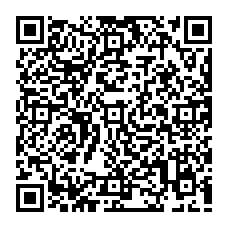

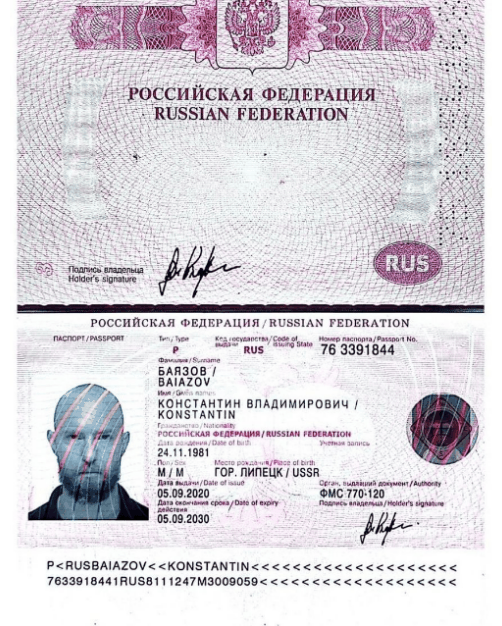










/cdn.vox-cdn.com/uploads/chorus_image/image/61436539/stasi_1020.1419979914.0.jpg)


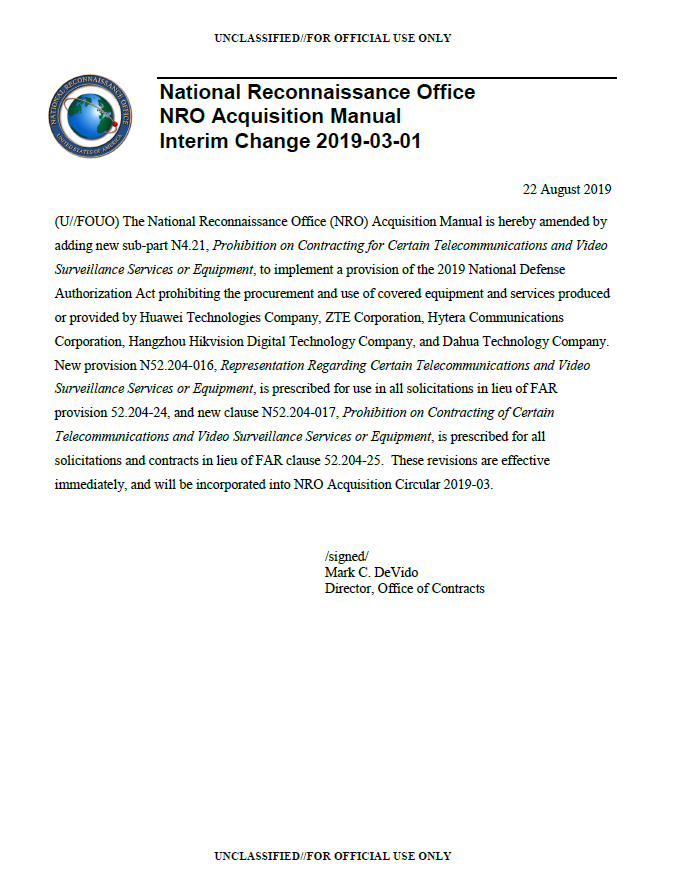






![[Image]](https://cryptome.org/2017-info/croughton/croughton-02.jpg)
![[Image]](https://cryptome.org/2017-info/croughton/croughton-01.jpg)





![[Image]](https://cryptome.org/2015-info/niamey/pict22.jpg)
![[Image]](https://cryptome.org/2015-info/niamey/pict20.jpg)
![[Image]](https://cryptome.org/2015-info/niamey/pict18.jpg)
![[Image]](https://cryptome.org/2015-info/niamey/pict17.jpg)
![[Image]](https://cryptome.org/2015-info/niamey/pict16.jpg)
![[Image]](https://cryptome.org/2015-info/niamey/pict14.jpg)
![[Image]](https://cryptome.org/2015-info/niamey/pict3.jpg)
![[Image]](https://cryptome.org/2015-info/niamey/pict4.jpg)
![[Image]](https://cryptome.org/2015-info/niamey/pict5.jpg)
![[Image]](https://cryptome.org/2015-info/niamey/pict9.jpg)
![[Image]](https://cryptome.org/2015-info/niamey/pict10.jpg)
![[Image]](https://cryptome.org/2015-info/niamey/pict6.jpg)
![[Image]](https://cryptome.org/2015-info/niamey/pict27.jpg)
![[Image]](https://cryptome.org/2015-info/niamey/pict44.jpg)
![[Image]](https://cryptome.org/2015-info/niamey/pict28.jpg)
![[Image]](https://cryptome.org/2015-info/niamey/pict45.jpg)
![[Image]](https://cryptome.org/2015-info/niamey/pict29.jpg)
![[Image]](https://cryptome.org/2015-info/niamey/pict30.jpg)
![[Image]](https://cryptome.org/2015-info/niamey/pict31.jpg)
![[Image]](https://cryptome.org/2015-info/niamey/pict32.jpg)
![[Image]](https://cryptome.org/2015-info/niamey/pict33.jpg)
![[Image]](https://cryptome.org/2015-info/niamey/pict34.jpg)
![[Image]](https://cryptome.org/2015-info/niamey/pict35.jpg)
![[Image]](https://cryptome.org/2015-info/niamey/pict36.jpg)
![[Image]](https://cryptome.org/2015-info/niamey/pict37.jpg)
![[Image]](https://cryptome.org/2015-info/niamey/pict39.jpg)
![[Image]](https://cryptome.org/2015-info/niamey/pict40.jpg)
































































































































![[Image]](https://cryptome.org/2016/06/linknyc-spy-kiosks-installation-videos.jpg)

![[Image]](https://cryptome.org/2016/06/linknyc-spy-kiosks-installation-videos-3.jpg)


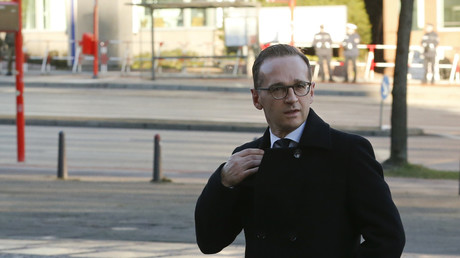






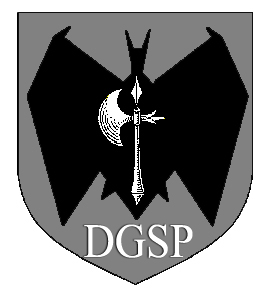























![[Image]](https://cryptome.org/2015-info/shenzhen/pict19.jpg)
![[Image]](https://cryptome.org/2015-info/shenzhen/pict20.jpg)
![[Image]](https://cryptome.org/2015-info/shenzhen/pict17.jpg)
![[Image]](https://cryptome.org/2015-info/shenzhen/pict16.jpg)
![[Image]](https://cryptome.org/2015-info/shenzhen/pict2.jpg)
![[Image]](https://cryptome.org/2015-info/shenzhen/pict3.jpg)
![[Image]](https://cryptome.org/2015-info/shenzhen/pict4.jpg)
![[Image]](https://cryptome.org/2015-info/shenzhen/pict5.jpg)
![[Image]](https://cryptome.org/2015-info/shenzhen/pict6.jpg)
![[Image]](https://cryptome.org/2015-info/shenzhen/pict7.jpg)
![[Image]](https://cryptome.org/2015-info/shenzhen/pict8.jpg)
![[Image]](https://cryptome.org/2015-info/shenzhen/pict9.jpg)
![[Image]](https://cryptome.org/2015-info/shenzhen/pict10.jpg)
![[Image]](https://cryptome.org/2015-info/shenzhen/pict11.jpg)
![[Image]](https://cryptome.org/2015-info/shenzhen/pict12.jpg)
![[Image]](https://cryptome.org/2015-info/shenzhen/pict13.jpg)
![[Image]](https://cryptome.org/2015-info/shenzhen/pict14.jpg)
![[Image]](https://cryptome.org/2015-info/shenzhen/pict15.jpg)

![[Image]](https://cryptome.org/2015/11/sgs-colerne.jpg)




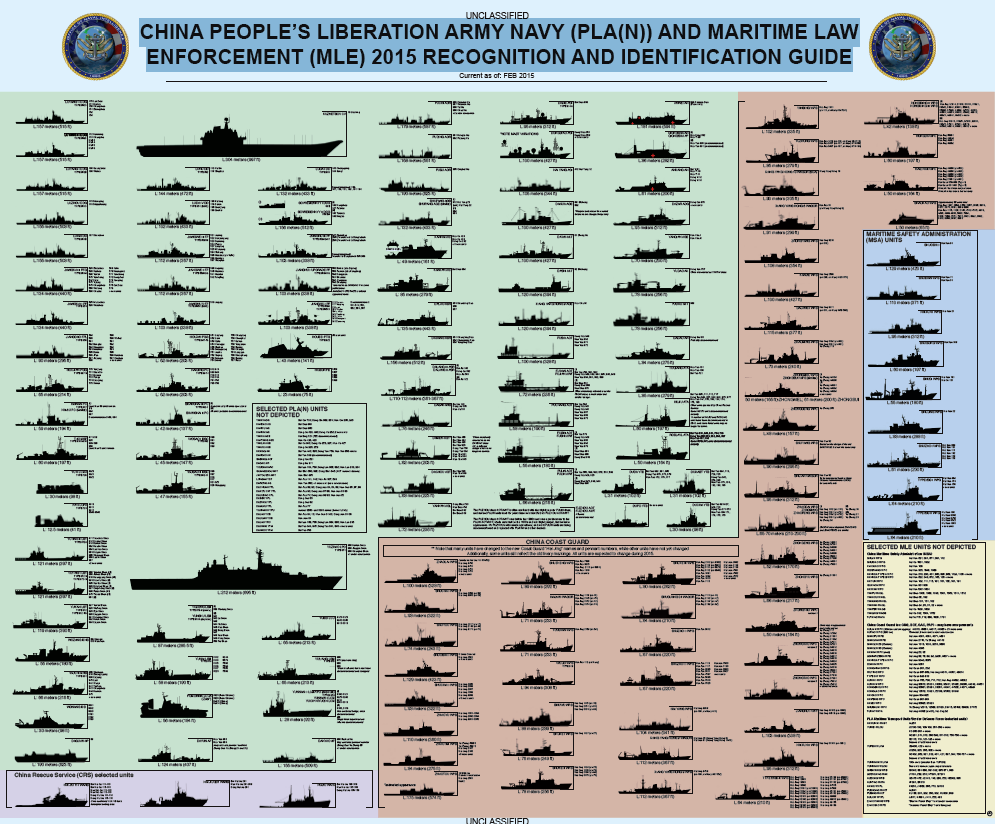

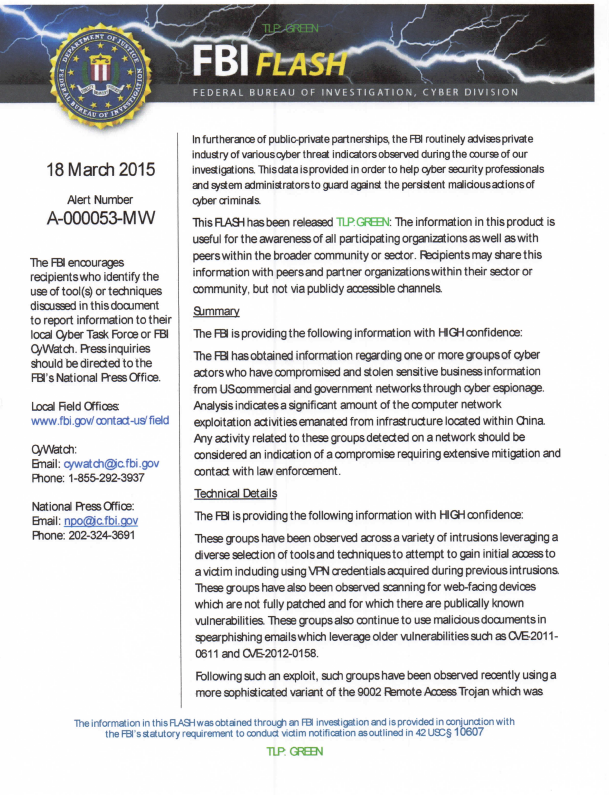




![[Image]](https://i0.wp.com/cryptome.org/2015-info/evgeny-buryakov/pict7.jpg)
![[Image]](https://i0.wp.com/cryptome.org/2015-info/evgeny-buryakov/pict0.jpg)
![[Image]](https://i0.wp.com/cryptome.org/2015-info/evgeny-buryakov/pict5.jpg)
![[Image]](https://i0.wp.com/cryptome.org/2015-info/evgeny-buryakov/pict2.jpg)
![[Image]](https://i0.wp.com/cryptome.org/2015-info/evgeny-buryakov/pict1.jpg)
![[Image]](https://i0.wp.com/cryptome.org/2015-info/evgeny-buryakov/pict3.jpg)
![[Image]](https://i0.wp.com/cryptome.org/2015-info/evgeny-buryakov/pict4.jpg)






















![Inside the biological weapons factory at Stepnogorsk, Kazakhstan, where the Soviet Union was prepared to make tons of anthrax if the orders came from Moscow [Photo courtesy Andy Weber]](https://nsarchive.files.wordpress.com/2014/07/stepnogorsk_400.jpg?w=300&h=204)

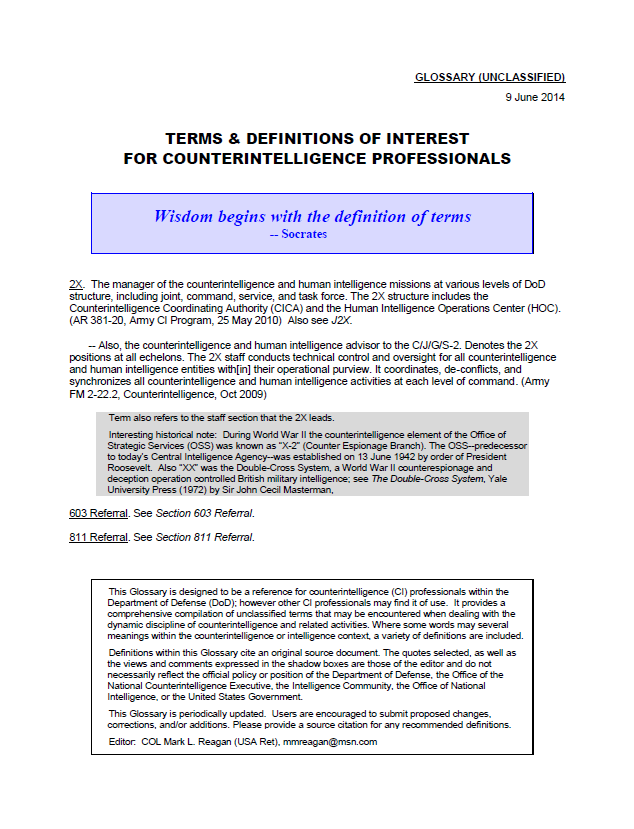
![[Image]](https://i0.wp.com/cryptome.org/2014-info/pla-unit-61398/pict0.jpg)
![[Image]](https://i0.wp.com/cryptome.org/2014-info/pla-unit-61398/pict14.jpg)
![[Image]](https://i0.wp.com/cryptome.org/2014-info/pla-unit-61398/pict11.jpg)
![[Image]](https://i0.wp.com/cryptome.org/2014-info/pla-unit-61398/pict10.jpg)
![[Image]](https://i0.wp.com/cryptome.org/2014-info/pla-unit-61398/pict9.jpg)
![[Image]](https://i0.wp.com/cryptome.org/2014-info/pla-unit-61398/pict8.jpg)
![[Image]](https://i0.wp.com/cryptome.org/2014-info/pla-unit-61398/pict7.jpg)
![[Image]](https://i0.wp.com/cryptome.org/2014-info/pla-unit-61398/pict6.jpg)
![[Image]](https://i0.wp.com/cryptome.org/2014-info/pla-unit-61398/pict5.jpg)
![[Image]](https://i0.wp.com/cryptome.org/2014-info/pla-unit-61398/pict13.jpg)
![[Image]](https://i0.wp.com/cryptome.org/2014-info/pla-unit-61398/pict12.jpg)

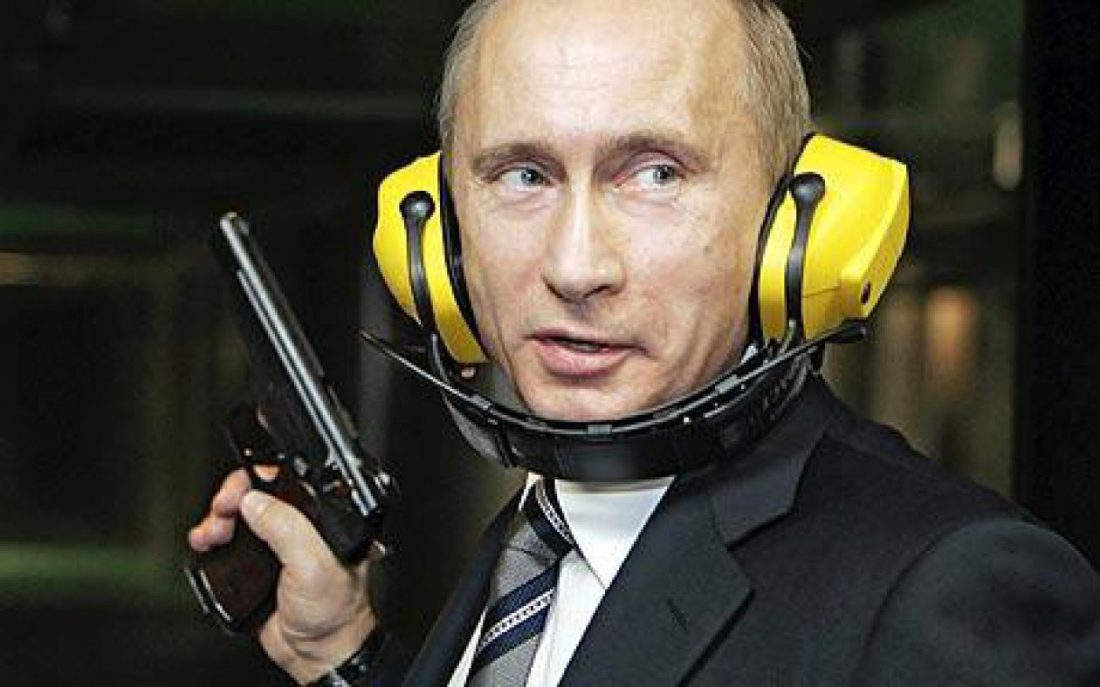










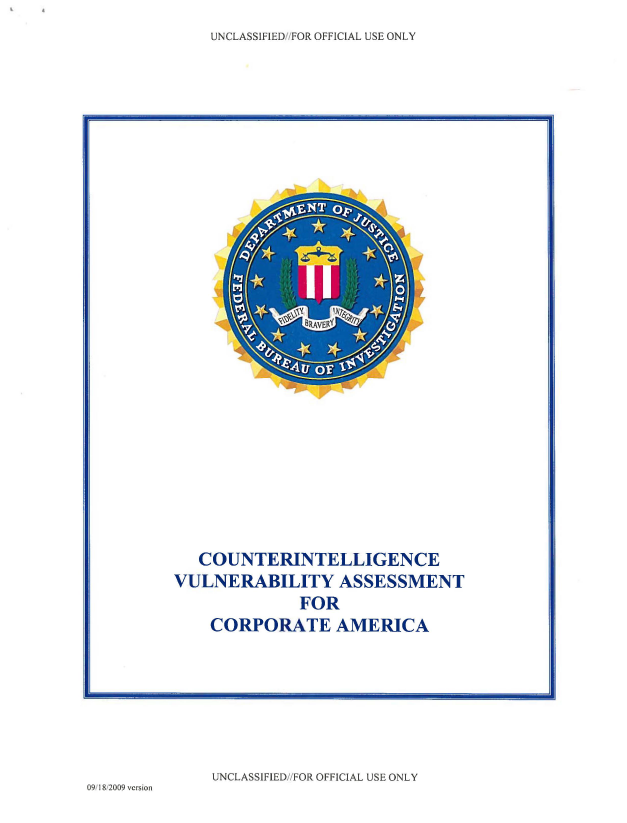


















You must be logged in to post a comment.